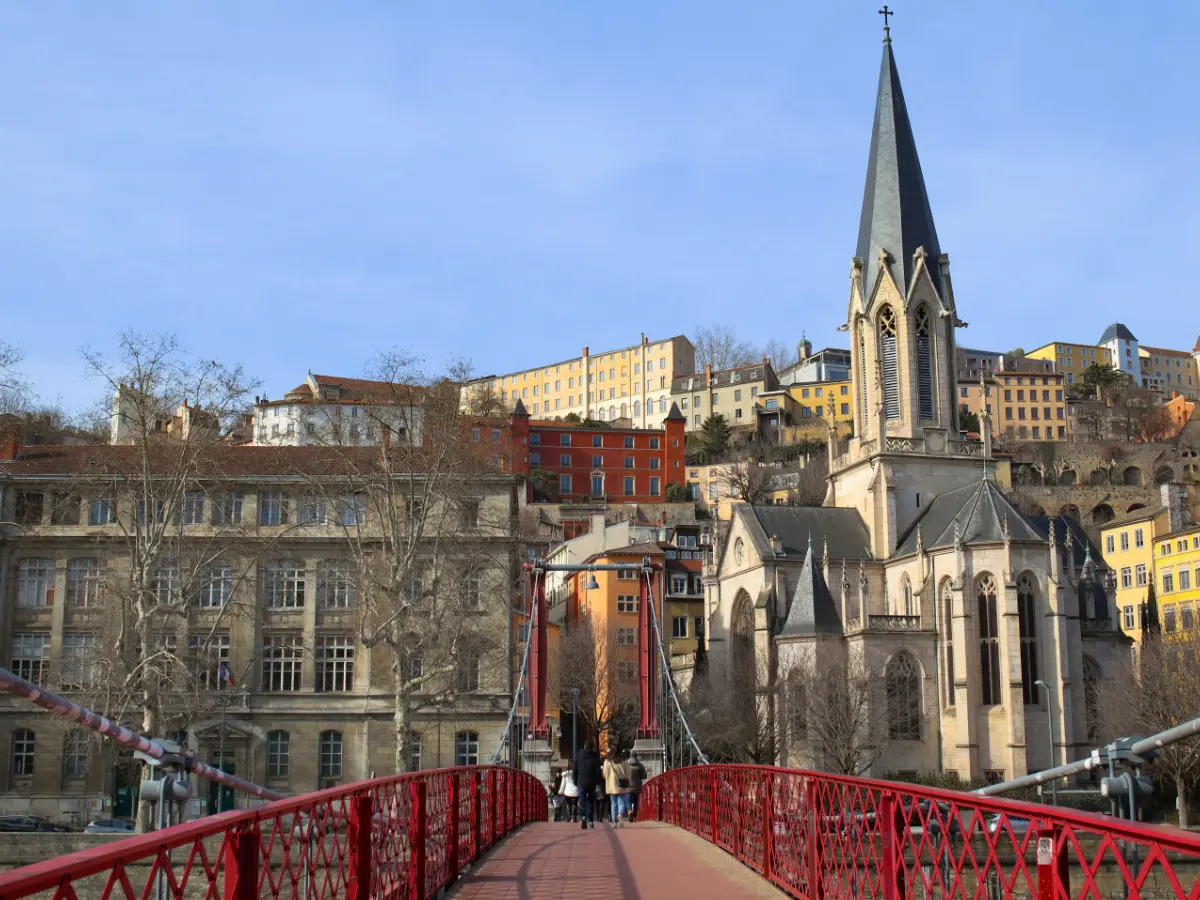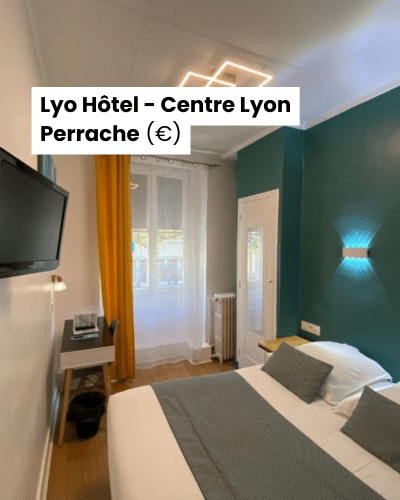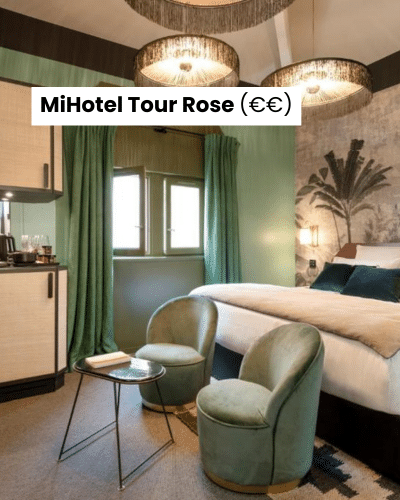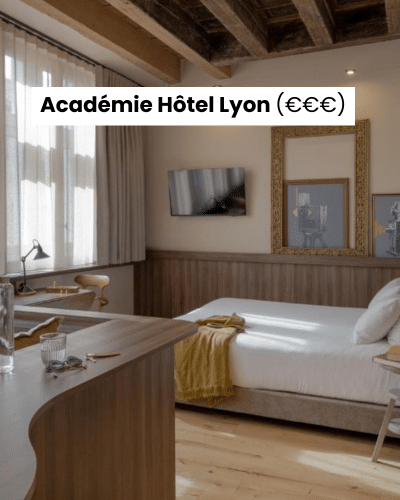Planning the perfect Lyon itinerary but not sure where to start? Then you’re in the right place.
If you’re wondering whether 2 days in Lyon is enough to experience the best of the city, the answer is yes—if you plan it right.
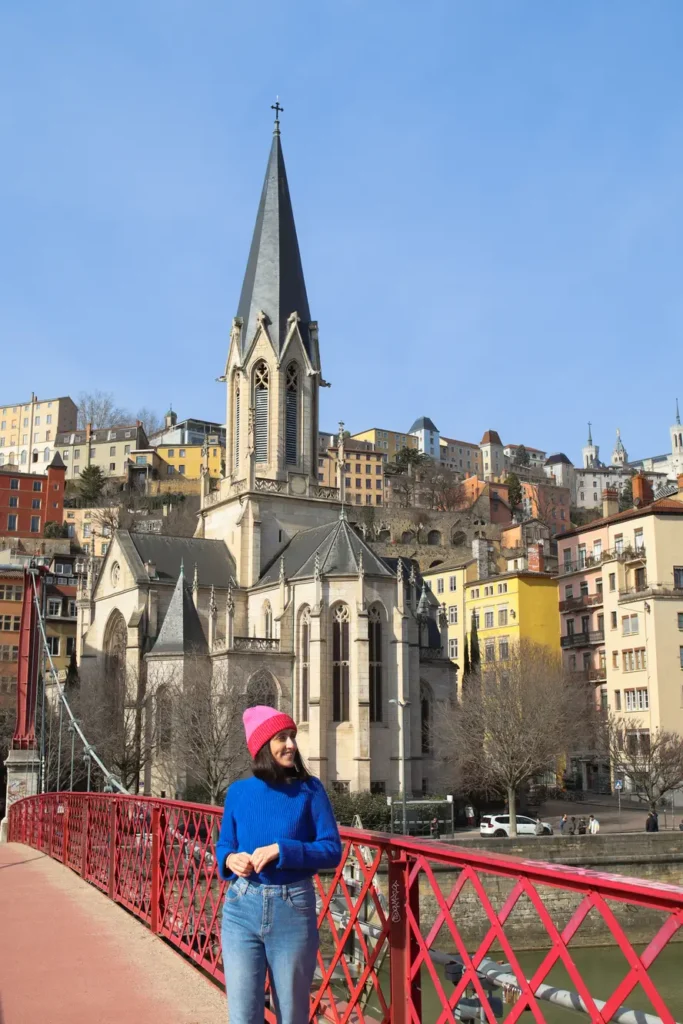
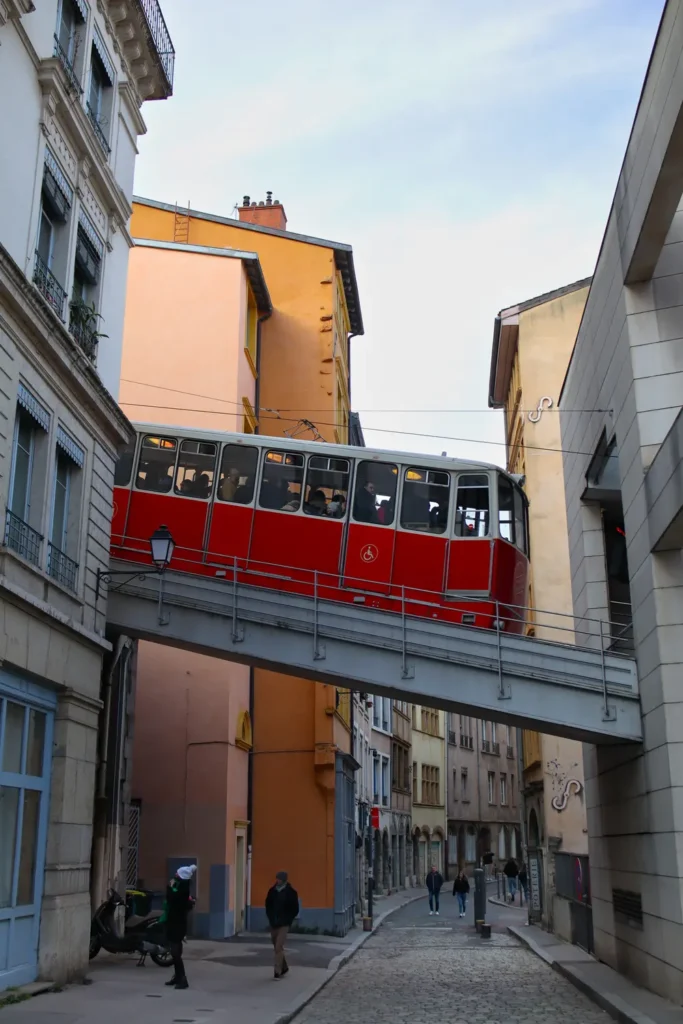
Paris often overshadows Lyon, but it’s a must-visit for food lovers, history buffs, and culture seekers. It’s home to world-famous cuisine, stunning Renaissance architecture, and a rich Roman past.
The Croix-Rousse district was once the heart of Lyon’s silk industry, filled with traboules. Traboules are hidden passageways that silk workers used to transport fabrics. Today, these passageways remain one of the top things to do in Lyon and offer a fascinating glimpse into the city’s past.
I visited Lyon on a weekend getaway in February 2025 and was surprised by how much I could see and do in just two days—without feeling rushed.
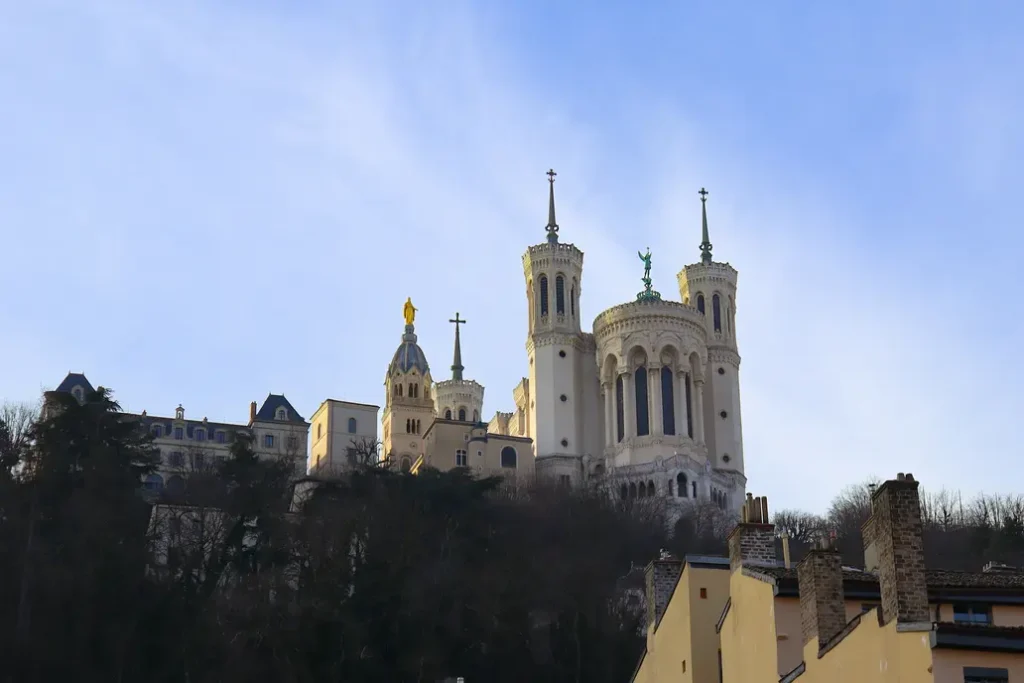
From the historic charm of Vieux Lyon to the bustling streets of Presqu’île and the hilltop views from Fourvière, Lyon’s districts each have something unique to offer. The city is beautifully set between the Rhône and Saône Rivers, adding to its scenic charm and making it a pleasure to explore on foot.
So, what’s the best way to visit Lyon in a short time?
In this guide, you’ll find:
- A detailed day-by-day itinerary to make the most of Lyon in 2 days
- The best time to visit and how to make the most of your trip
- Where to eat, stay, and how to get around like a local
Whether you’re planning a quick city break or adding Lyon to a longer France itinerary, this guide will help you maximize your time and experience the city with ease.
In a hurry? Here are the main things to know before visiting Lyon
📍Top sights: Fourvière Basilica | Vieux Lyon | Parc de la Tête d’Or | Les Halles de Lyon | Traboules
🚇 How to get around: Lyon’s metro, trams, and buses are the best way to explore. The Lyon City Card includes unlimited transport. Walking is ideal for central districts.
⌛ How many days in Lyon: 2 days is enough to see the highlights, but 3 days allow for a more relaxed pace and museum visits.
🍷 Most popular tours in Lyon
1. Lyon River Cruise – A scenic boat ride offering stunning views of the city.
2. Beaujolais Wine Tasting Day Tour – Visit vineyards and sample world-class wines
3. Lyon Old Town Walking Tour – Learn more about the city while exploring Vieux Lyon
😴 Where to stay in Lyon
My Recommendation – Campanile Lyon Centre Part-Dieu
1. Budget-friendly Stay – Lyo Hotel – Centre Lyon Perrache
2. Mid-range Option – MiHotel Tour Rose
3. Luxurious – Académie Hotel Lyon
💊 Best travel insurance for France – I recommend Heymondo for its excellent balance between affordability and quality.
🛜 Best way to stay connected in France – If your smartphone allows an eSIM, I recommend using Airalo (MARIAN4315 = 3$ off 1st order). Otherwise, look for Orange, Bouygues or SFR local SIM.
Is Lyon worth visiting?
Absolutely—Lyon is one of France’s most underrated cities!
While Paris and the French Riviera often steal the spotlight, Lyon offers a perfect mix of history, culture, and world-class food without overwhelming crowds.
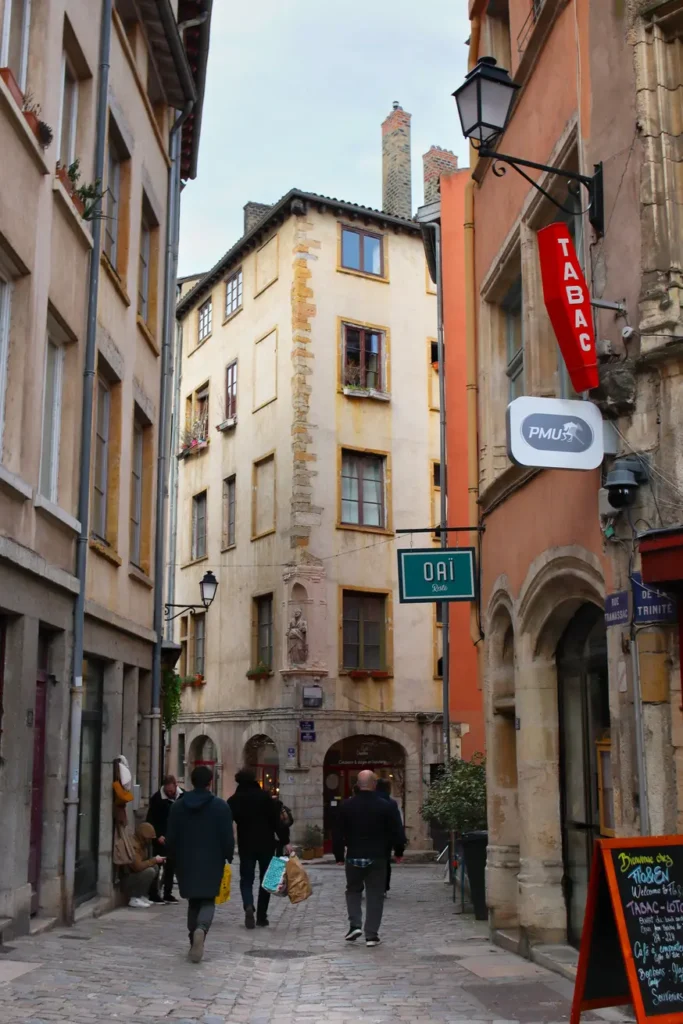
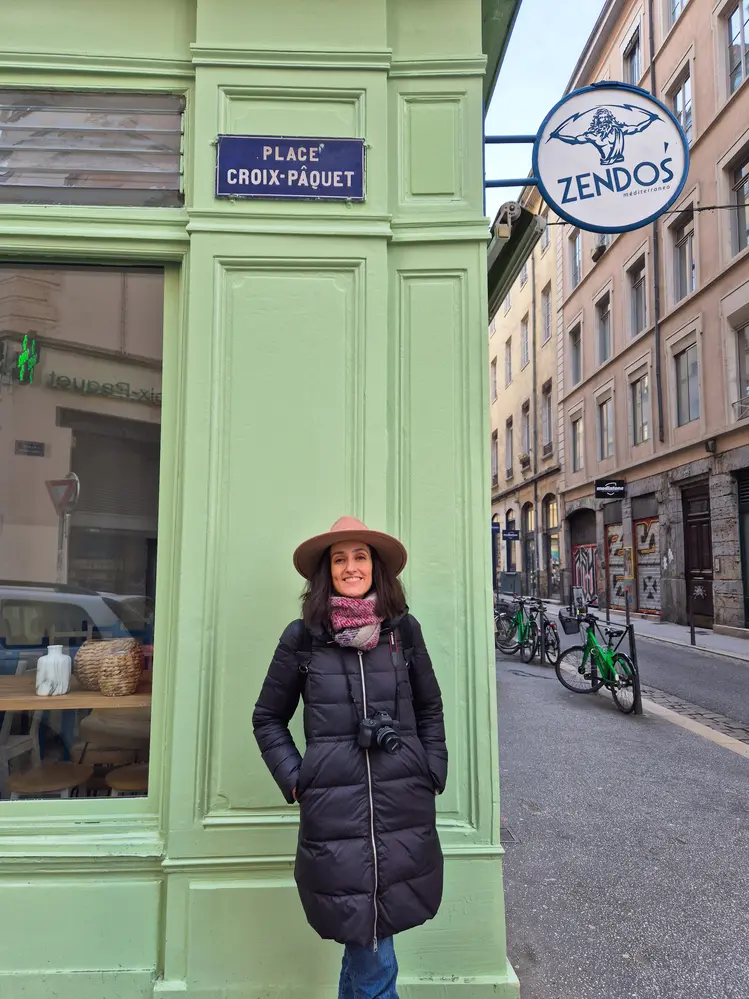
Here’s why Lyon is 100% worth visiting:
- It’s the food capital of France – Lyon is home to bouchons, traditional restaurants serving authentic Lyonnais cuisine.
- A rich history and stunning architecture – From its well-preserved Old Town (Vieux Lyon) to the impressive Basilica of Notre-Dame de Fourvière, Lyon is full of historic gems.
- A more relaxed alternative to Paris – While Paris can feel fast-paced, Lyon has a charming, laid-back vibe—perfect for strolling along the Saône River or relaxing in Parc Tête d’Or.
- Great for short trips – Lyon is the perfect weekend city getaway in Europe! The city is compact, walkable, and well-connected by public transport.
- Easier on the budget – Compared to other French cities, Lyon offers great food, affordable hotels, and many free attractions, making it a fantastic destination for travelers looking for value.
How to get to Lyon
Lyon is well-connected by air, train, and road, making it easy to reach from anywhere in France and beyond.
Getting to Lyon by Plane (Lyon-Saint Exupéry Airport)
If you’re flying into Lyon, you’ll land at Lyon-Saint Exupéry Airport (LYS), located about 25 km (15 miles) from the city center.
This international airport serves both European and long-haul flights. It’s a convenient option for travelers.
Getting from the airport to the city is easy with the Rhônexpress tram. It takes around 30 minutes to reach Lyon Part-Dieu station—the city’s main transport hub.
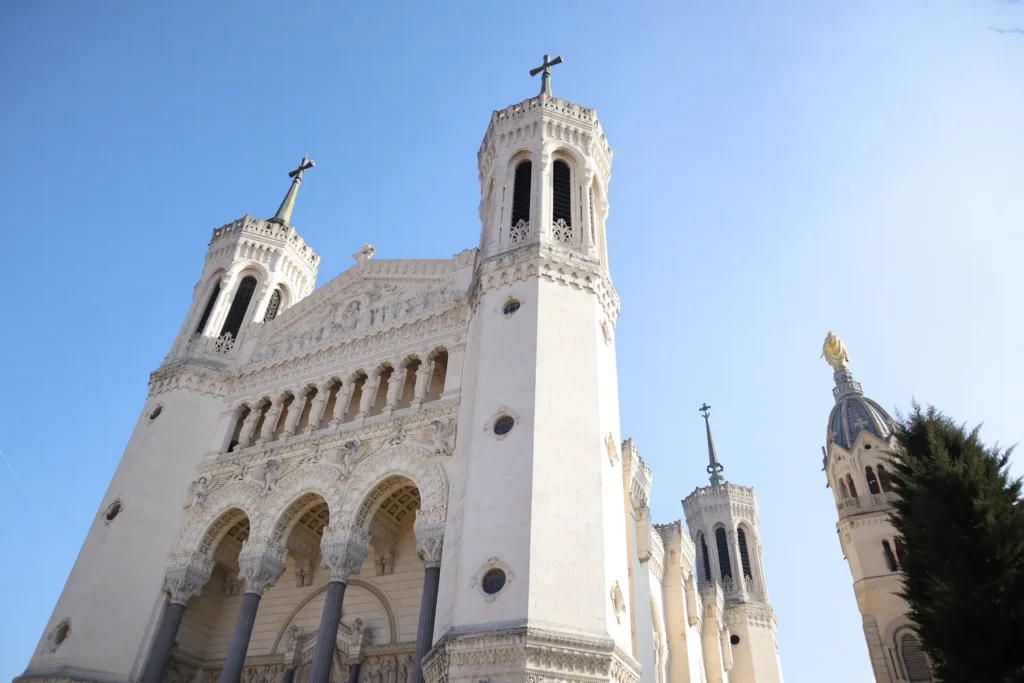
Getting to Lyon by Train (TGV Connections from Paris, Marseille, etc.)
Lyon has two main train stations:
- Lyon Part-Dieu – The city’s primary station, handling most high-speed TGV services.
- Lyon Perrache – A smaller station, mainly serving regional and some long-distance routes.
If you’re coming from another French city or even a neighboring country, high-speed TGV trains offer a fast and comfortable way to reach Lyon:
- Paris to Lyon – ~2 hours
- Marseille to Lyon – ~1h40
- Geneva to Lyon – ~2 hours
- Milan to Lyon – ~5 hours
Both stations are well-connected by metro, tram, and buses, making it easy to continue your journey once you arrive.
Getting to Lyon by Bus
If you’re traveling on a budget, long-distance buses like FlixBus, Alsa or BlaBlaCar Bus offer affordable routes to Lyon from major European cities.
Most buses arrive at Perrache Station or the Lyon Part-Dieu area, both conveniently located near public transport.
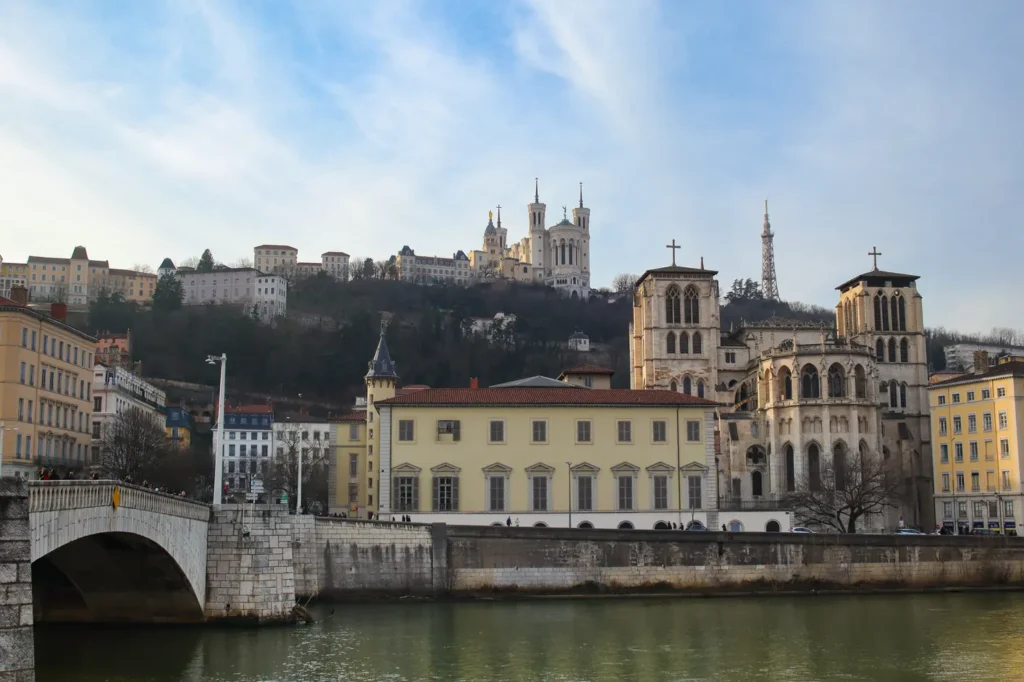
Getting to Lyon by Car
Even though a car isn’t necessary to explore Lyon itself, you can still arrive in Lyon by car if you’re coming from another destination.
Lyon is well-connected to major highways, making it a great stop on a France road trip. Plus, Lyon’s location makes it a perfect gateway to other incredible places like Annecy, the French Alps, and the Beaujolais wine region.
Best Driving Routes to Lyon
- From Paris: Take the A6 highway. The drive takes about 4.5 hours.
- From Marseille: The A7 highway brings you to Lyon in around 3 hours.
- From Geneva: The A42 highway connects Geneva to Lyon in about 2 hours.
- From Milan: The A43 and A5 highways link Milan to Lyon in about 5 hours.
Parking in Lyon
Even though you can arrive in Lyon by car, you shouldn’t rely on it to get around the city.
Parking in the center is limited, traffic can be frustrating, and many areas are best explored on foot or by public transport. Instead of dealing with the hassle of finding a spot, it’s best to choose a hotel with parking so you can leave your car safely and enjoy the city stress-free.
If your accommodation doesn’t offer parking, consider using park-and-ride facilities near metro stations. This will help you avoid city traffic and expensive hourly rates.
🚗 If you’re renting a car in France, Discover Cars is a great platform to compare prices across different rental companies. It offers free cancellation for flexibility, an easy-to-use search tool to find the best deals, and side-by-side comparisons to ensure you get the lowest rates.
Where to stay in Lyon
Best Areas to Stay in Lyon
- Vieux Lyon (Old Town) – If you want to stay in a picturesque, historic area. With its cobbled streets, charming Renaissance buildings, and lively restaurants, it’s perfect for those who love character and atmosphere. Just keep in mind that hotels here tend to be on the pricier side.
- Presqu’île – The most central area, located between the Rhône and Saône rivers. It’s ideal for first-time visitors who want to be within walking distance of major attractions. However, since it’s the busiest part of Lyon, hotels can be more expensive, and parking is limited.
- Part-Dieu (where I stayed) – A modern and quieter area, best for those looking for affordable stays with great transport options. It’s home to Lyon’s main train station (Gare Part-Dieu) and well connected by metro, tram, and bus, making it easy to explore the city.
My Recommendation: Campanile Lyon Centre Part-Dieu
During my visit to Lyon, I stayed at Campanile Lyon Centre Part-Dieu, and it turned out to be a great choice. Even though it’s not in the city center, it’s in a calm neighborhood with excellent transport connections. It is easy to reach all major attractions.
The hotel is modern, clean, and comfortable, offering great value for money.
FYI: We opted not to have breakfast at the hotel and instead went to Delights Charlie Bakery Pastry just a few minutes away. It was much cheaper and had delicious pastries—a perfect way to start the day!
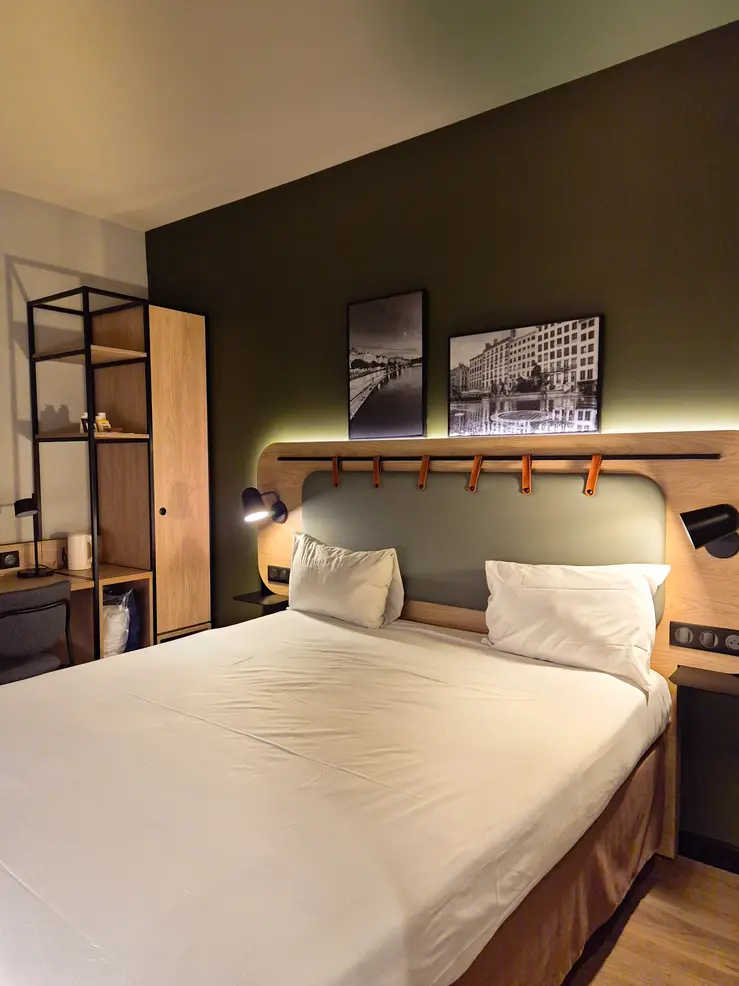
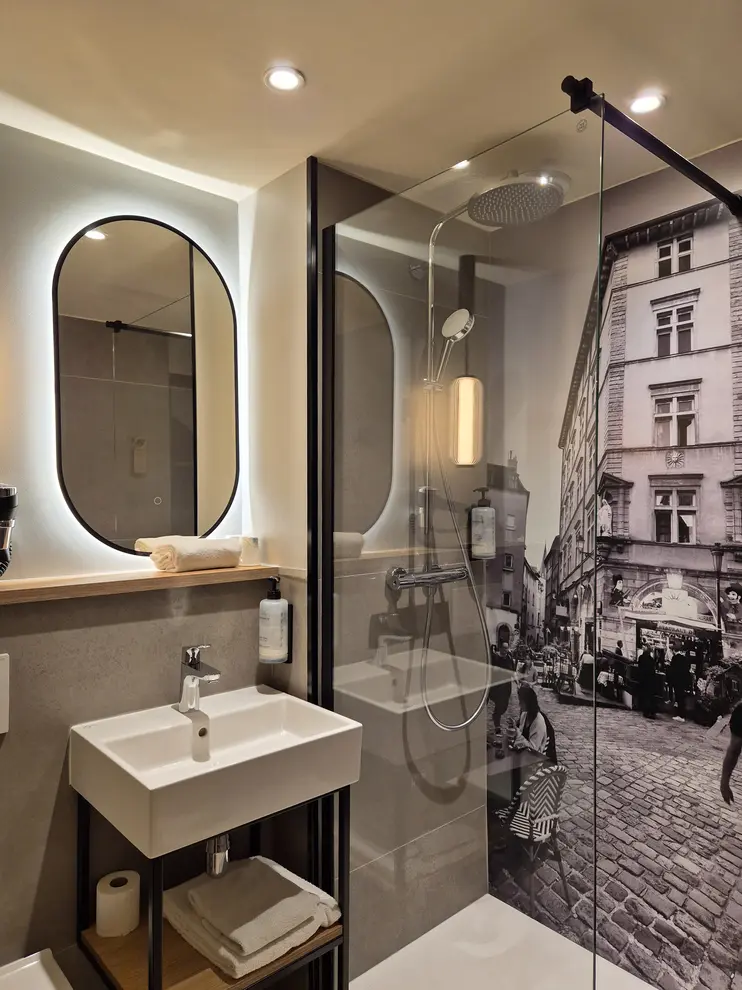
Other Accommodation Options in Lyon
Lyon has a wide range of hotels that suit different budgets. Whether you’re looking for luxury stays with river views, mid-range boutique hotels, or affordable hostels, there are plenty of choices.
Here are some of my favorite options in the city:
💼 TRAVEL INSURANCE: Unexpected events happen anywhere in the world, so I always recommend getting travel insurance. I regularly use Heymondo, which offers some of the highest coverages on the market at very competitive prices. As well as covering medical expenses, Heymondo’s insurance also covers the loss or theft of luggage, electronic equipment and more. They also have a 24/7 customer service through their App. As A Ticket to Take Off reader, you get a 5% discount when purchasing Heymondo insurance. The purchase must be made using this link, and the price shown on the website already includes the discount.
Activities & Tours in Lyon
Lyon Sightseeing Map
To help you navigate the city, I’ve put together a detailed map of the best things to do in Lyon. It includes top landmarks like Fourvière Basilica, Vieux Lyon, and Place Bellecour, along with must-visit food markets, murals, and scenic viewpoints.
Use this map to plan your itinerary, find hidden gems, and make the most of your time in Lyon!
📌HOW TO USE THE MAP: Click on the top left corner to access the various layers of the map. You can select the layers you’re interested in and also find out more about each point of interest by clicking on it in the left-hand sidebar or on the pin on the map. Add the map to your Google Maps by clicking on the star next to the title. To access the map, simply go to Google Maps ‘Saved’ and click on ‘Maps’!
2 days in Lyon Itinerary
I’ve broken this Lyon itinerary down by time of day, so you know exactly where to go and when.
Over these two days, you’ll stroll through Lyon’s old town, admire stunning murals, enjoy panoramic city views, and, of course, indulge in the Lyonnais cuisine.
Each section will guide you through morning, afternoon, and evening activities, ensuring a well-paced and unforgettable experience in France’s gastronomic capital.
Day 1 in Lyon: Food, Murals & Historic Lyon
Morning: A Foodie Start & Scenic Walks
» Parc de la Tête d’Or
Start your Lyon 2-day itinerary with a peaceful morning at Parc de la Tête d’Or, Lyon’s largest and most famous park.
Covering 117 hectares, it’s the perfect spot for a relaxing walk, especially around its beautiful lake and botanical gardens (one of my favorite parts of the park).
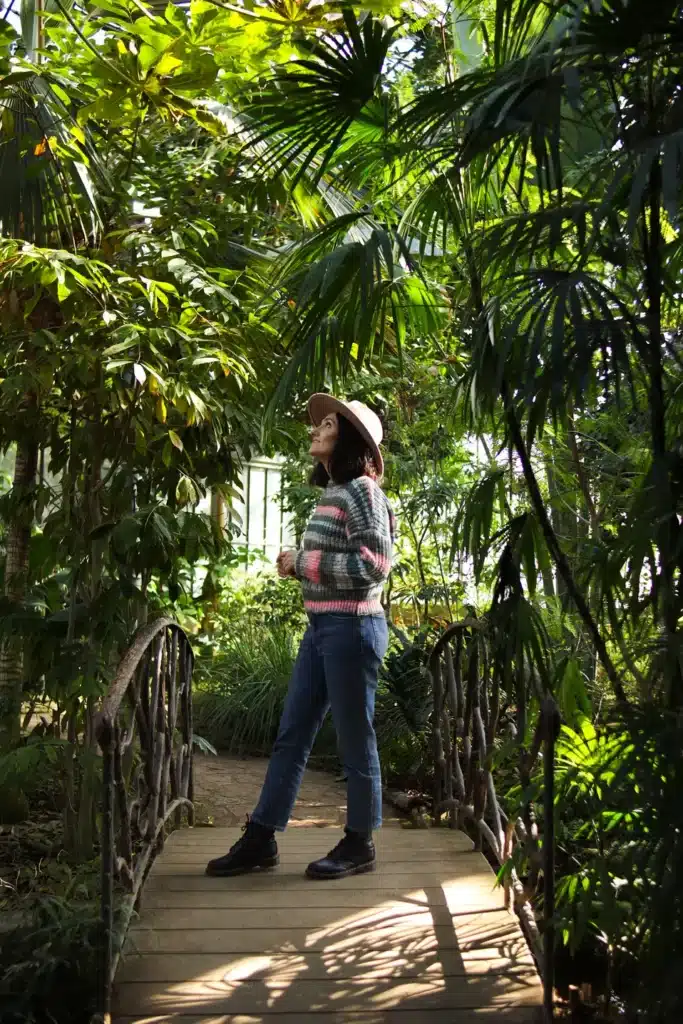
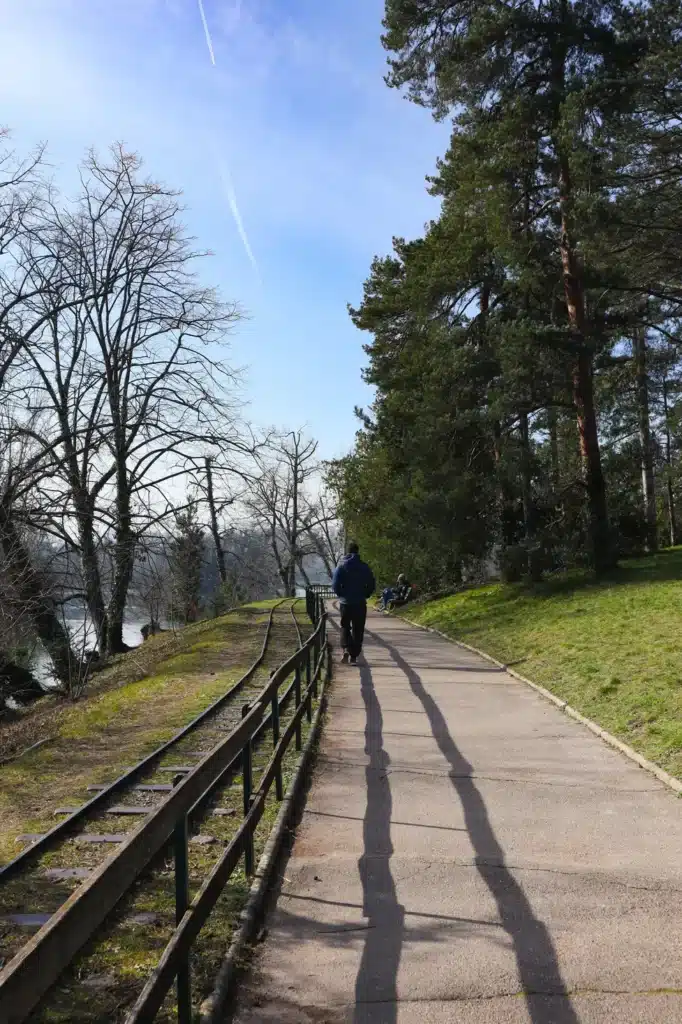
One thing that really surprised me during my visit was seeing giraffes and other animals in the park. I had only expected to find a few deer.
The park has a free zoo, home to a variety of animals, including flamingos and giraffes. That said, I don’t personally support zoo activities and I’m not sure about the ethics of this one, but I still think the park itself is well worth a visit.

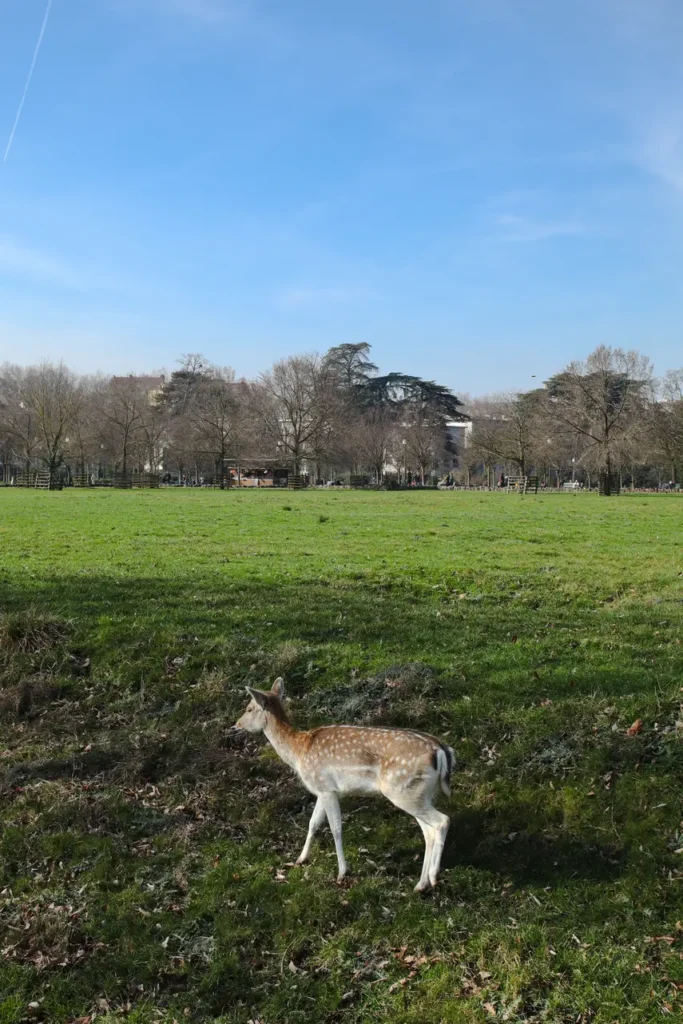
If you’re visiting in spring or summer, don’t miss the stunning rose garden. And, if you’re in the mood for something active, you can rent a bike or paddleboat on the lake.
The park is huge so plan to spend, at least, 2 hours there.
📝 USEFUL INFORMATION: The main entrance is at Porte des Enfants du Rhône, but there are multiple access points around the park. Entry is free, and the park is open daily from 6.30 am to 8.30 pm, extending to 10.30 pm from mid-April to mid-October.
» Les Halles de Lyon Paul Bocuse
No Lyon travel guide would be complete without food!
Continue towards Les Halles de Lyon Paul Bocuse, the most famous food market in Lyon.
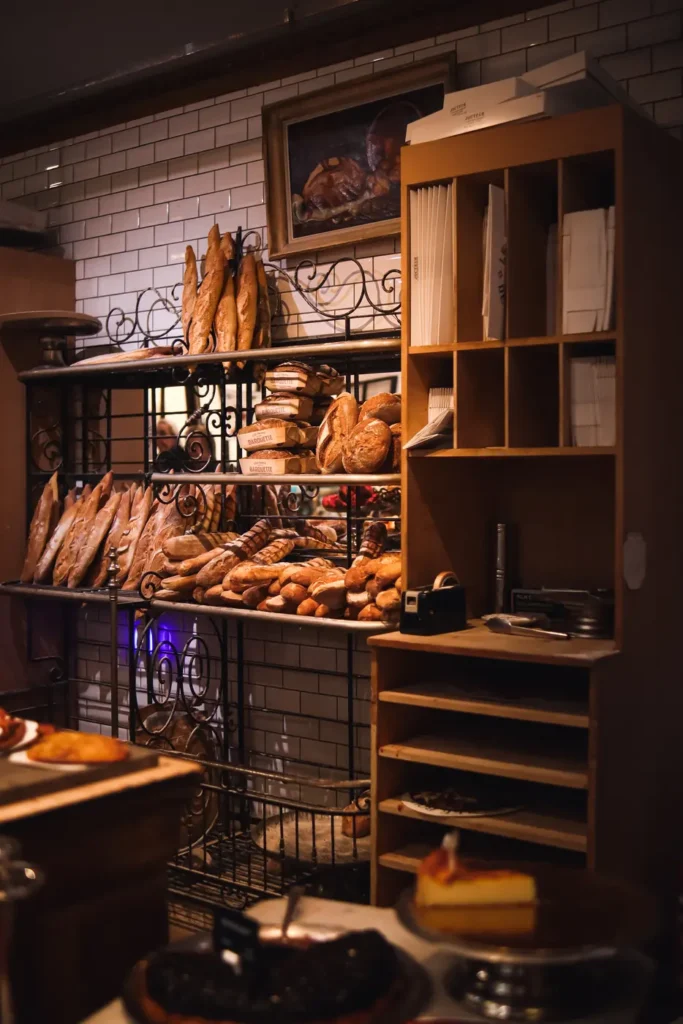
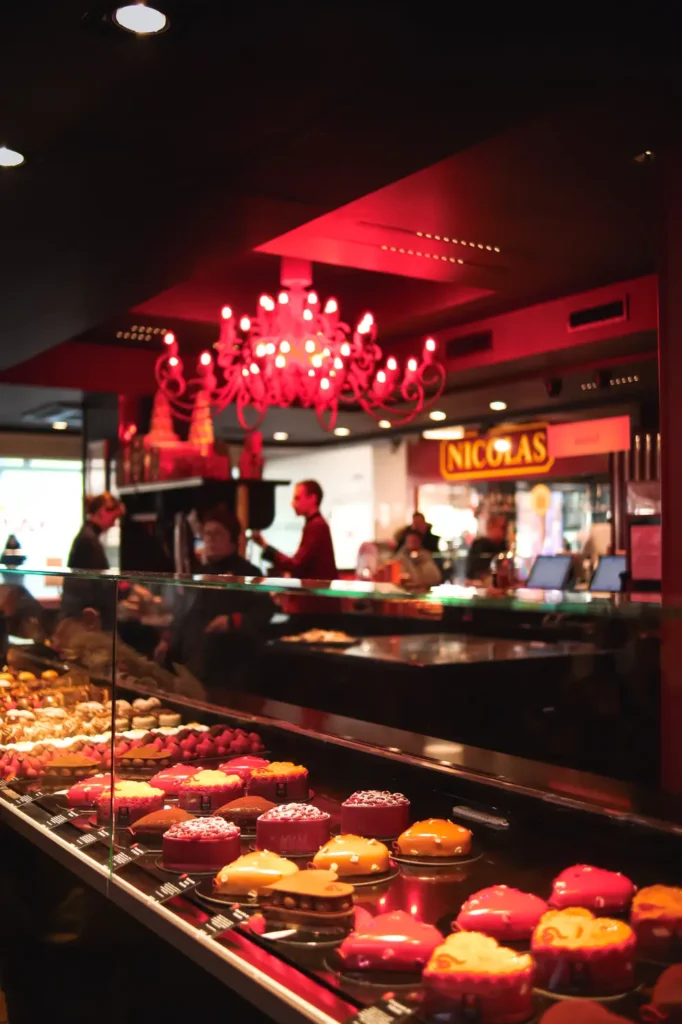
Named after the legendary French chef, this indoor market is a paradise for food lovers. You’ll find everything from fresh cheeses and cured meats to handmade pastries and local wines.
It’s the perfect spot to grab some traditional Lyonnais food or actually have lunch.
📝 USEFUL INFORMATION: Les Halles de Lyon Paul Bocuse is open Monday to Saturday from 7.30 am to 7.30 pm, with reduced hours on Sunday from 7.30 am to 1.00 pm for most traders. If you’re planning to eat at one of the market’s restaurants, they are open Monday to Saturday from 11.30 am to 2.30 pm, with extended hours on Sunday until 3.30 pm.
Afternoon: Historic Passages & Iconic Squares
» La Croix-Rousse District & Le Mur des Canuts
After grabbing a bite at Les Halles de Lyon (or actually having lunch) continue towards La Croix-Rousse District. This is a lively neighborhood with a unique bohemian charm.
Once the center of Lyon’s silk-weaving industry, this hilly district is now known for its artistic vibe, quirky shops, and amazing street art. Walking through its streets feels like stepping into a different side of Lyon.
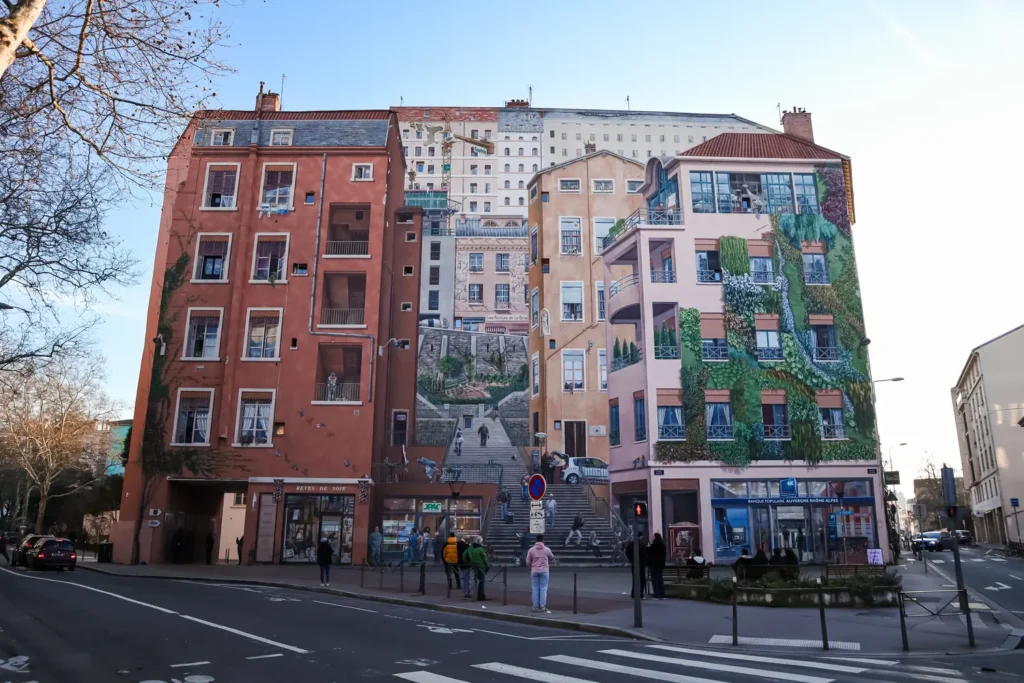
One of the most impressive Lyon attractions here is Le Mur des Canuts, a stunning mural. This massive trompe-l’œil painting brings the history of Croix-Rousse to life.
Trompe-l’œil (French for “deceive the eye”) is an artistic technique that creates optical illusions, making painted objects appear three-dimensional. Artists use perspective, shading, and depth to trick the viewer into thinking they’re looking at real objects.
The mural has been updated over the years, evolving along with the city, and it perfectly represents the spirit of Lyon’s silk workers.
🎫 For a deeper dive into Croix-Rousse’s silk-weaving history and hidden traboules, check out this guided tour!
» Rue Montée de la Grande-Côte
As you make your way through Lyon, don’t miss Rue Montée de la Grande-Côte, one of the most beautiful streets in the city.

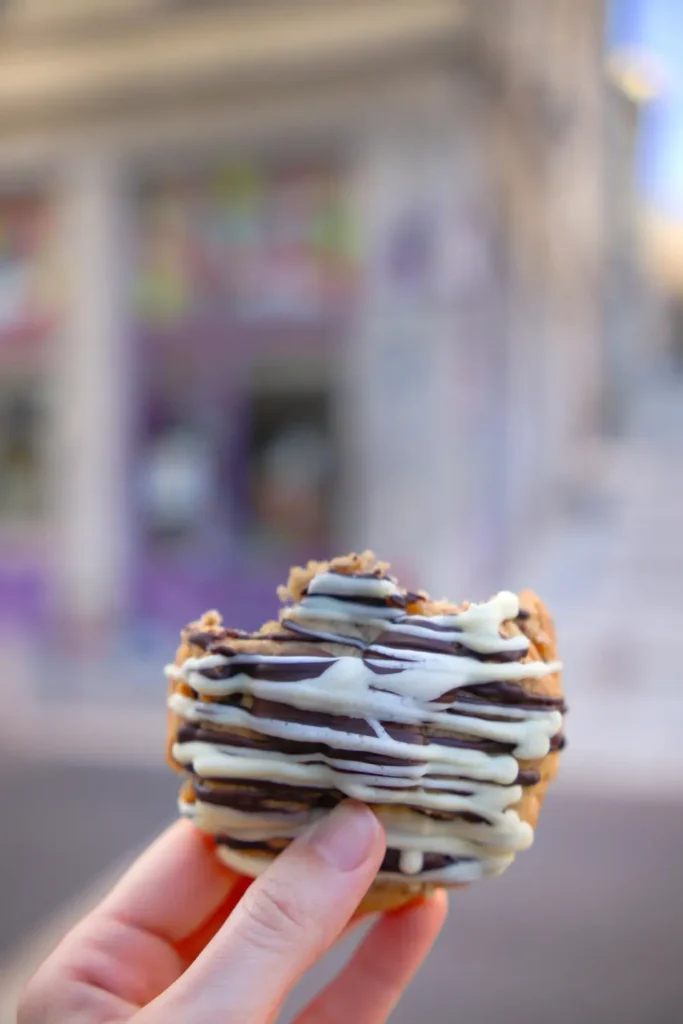
This steep, cobbled street is quite photogenic with its colorful buildings. It’s also a lively area filled with local cafés and boutique shops.
If you’re in for a sweet treat, try the cookies at Maison Safa. I tried the triple chocolate one and it was delicious!
» Cour des Voraces
Next, head to one of the most mysterious things you can do in Lyon.
Cour des Voraces is a must-see in Lyon. This is one of the oldest and most famous traboules in the city, connecting Place Colbert to Montée Saint-Sébastien.
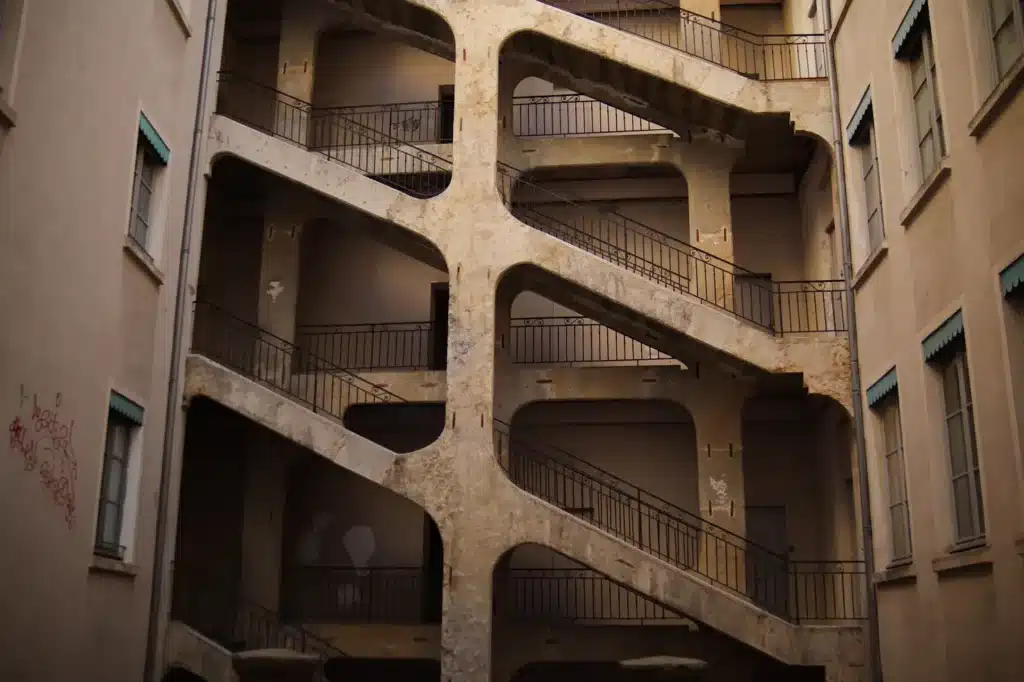
What is a traboule? Traboules are hidden passageways that run through buildings and courtyards, originally built to help silk workers transport fabrics across the city without being exposed to bad weather. Today, Lyon has around 400 traboules, many of which are open to the public, offering a fascinating glimpse into the city’s history.
If you’re visiting Lyon, exploring these passageways is a unique experience you won’t find in other French cities.
Built in the 19th century, Cour des Voraces is known for its imposing six-story staircase, a rare architectural feature.
It later became a symbol of resistance during World War II, used by members of the French Resistance to move discreetly through the city. Walking through this traboule, you’ll see impressive staircases and hidden courtyards. It’s one of the top things to do in Lyon for history lovers.
📝 USEFUL INFORMATION: You’ll find the entrance to Cour des Voraces at 9 Place Colbert.
» Place des Terreaux
A 10-minute walk from Cour des Voraces, you’ll reach Place des Terreaux, one of the most beautiful places to visit in Lyon. This lively square is home to 3 of the city’s most important landmarks:
- Hôtel de Ville (City Hall) – One of the finest buildings in the city, dating back to the 17th century.
- Fontaine Bartholdi – this impressive fountain represents France as a woman controlling four wild horses, symbolizing the country’s rivers.
- Musée des Beaux-Arts de Lyon – One of France’s most important fine arts museums
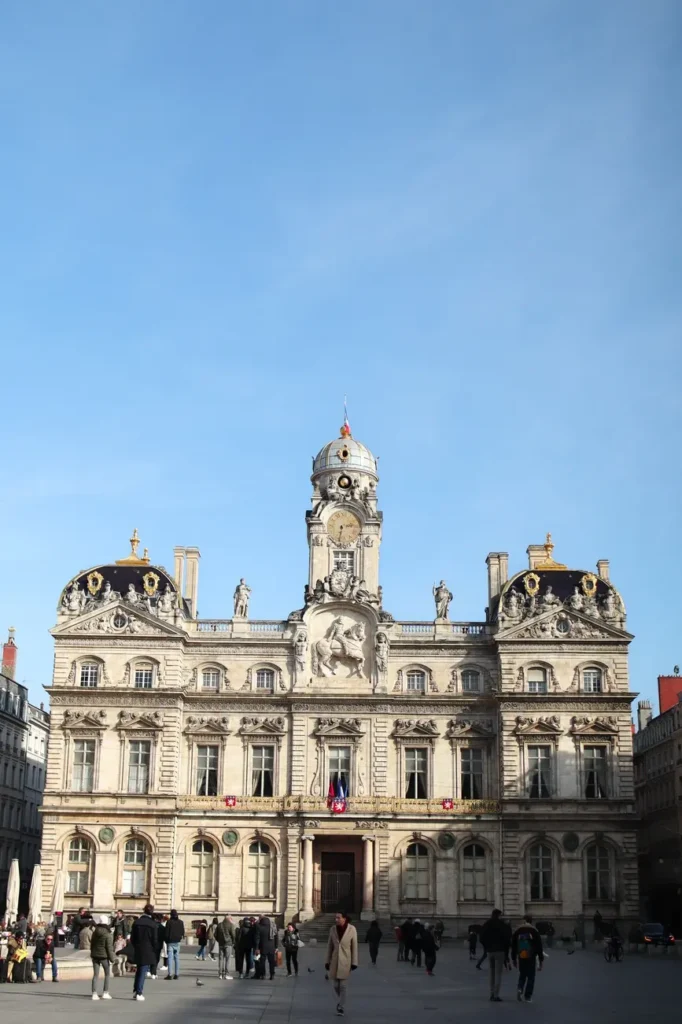
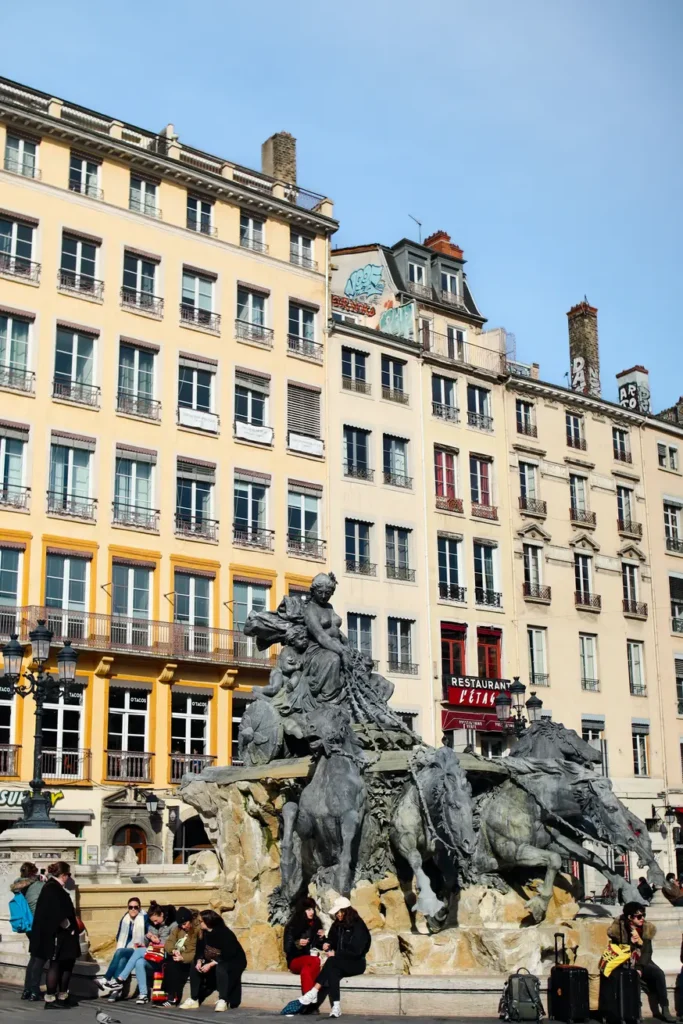
At night, Place des Terreaux is beautifully lit, making it a great spot to visit at night in Lyon.
» Place de la République
Continue walking to another must-see in Lyon – Place de la République. On the way, make sure not to miss other incredible buildings, such as the Lyon Stock Exchange (Palais de la Bourse).
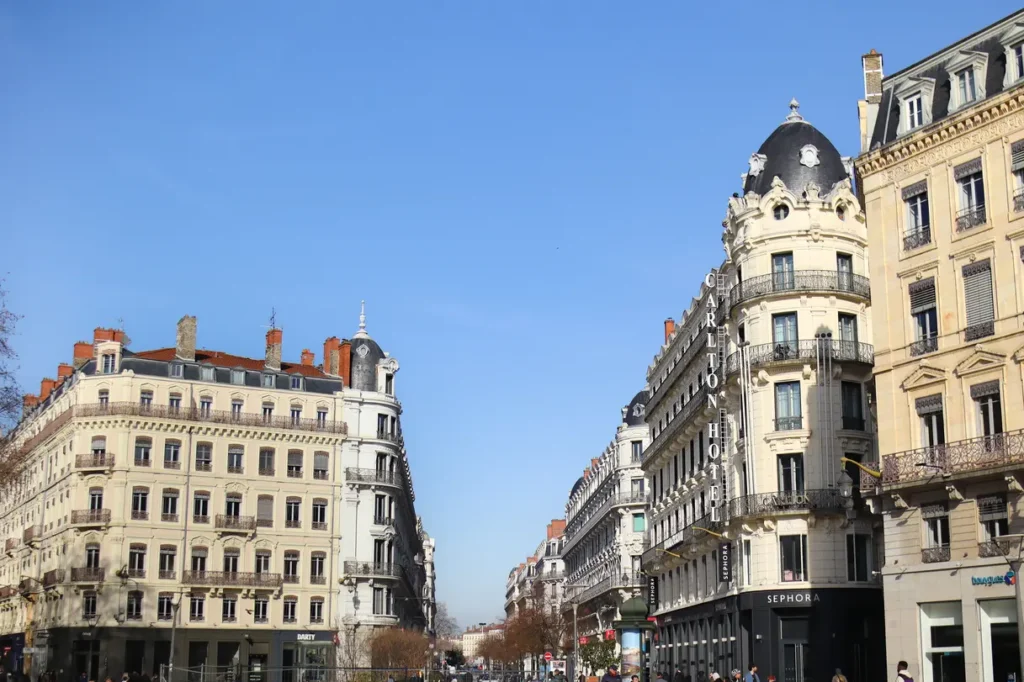
Place de la République is another bustling square surrounded by elegant buildings, shops, and cafés.
If you’re looking for a perfect place to take a break, this is it!
» Place des Jacobin
Next, walk over to Place des Jacobins, one of the most photogenic squares in Lyon.
The highlight of this square is the stunning 19th-century fountain, featuring statues of famous French artists and scholars.
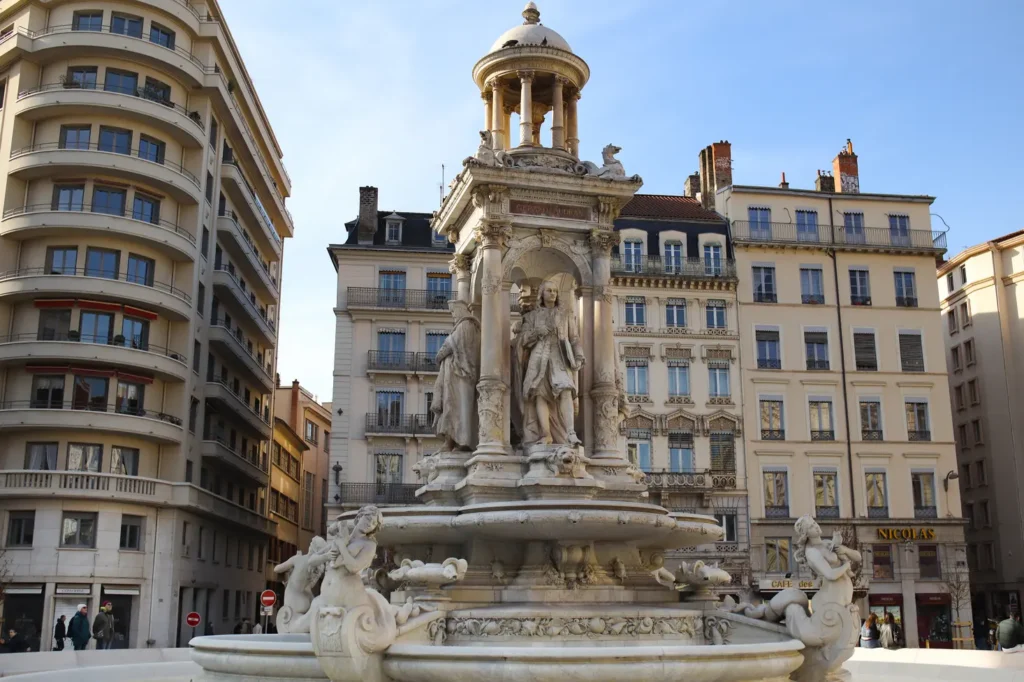
» Place Bellecour
End your afternoon at Place Bellecour, one of the largest squares in Europe and one of the most important landmarks in Lyon.
Located in the Presqu’île district, it’s a central meeting point and a must-visit spot when exploring Lyon in two days.
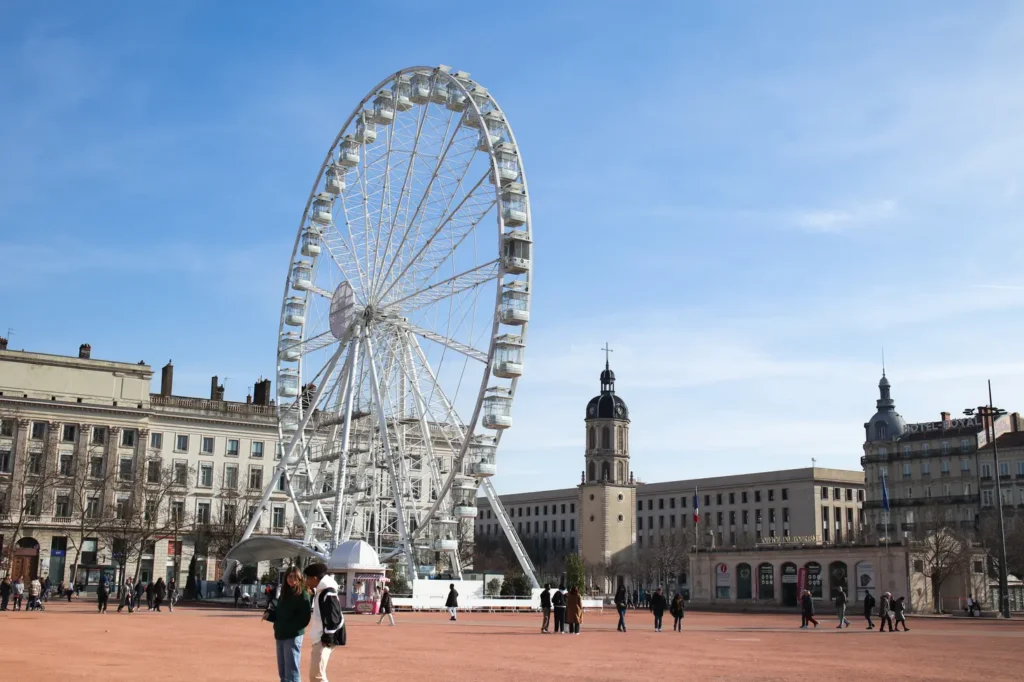
Here, you’ll find:
- The famous statue of Louis XIV, the centerpiece of the square.
- Great views of Fourvière Basilica, making it a great spot to snap some photos.
💡 EXTRA TIP: During Lyon’s Fête des Lumières, the square becomes a magical spectacle of light installations, projections, and artistic displays, making it one of the festival’s main highlights. If you’re visiting in December, don’t miss the chance to experience this breathtaking event!
Late afternoon: Scenic Boat ride
» A Scenic Boat Ride on the Saône
Seeing Lyon in 2 days means making the most of every moment, and one of the best ways to appreciate the city’s beauty is from the water.
A scenic boat ride along the Saône River offers a unique perspective of Lyon’s historic districts, iconic landmarks, and picturesque riverside views. All while giving your feet a well-earned break!
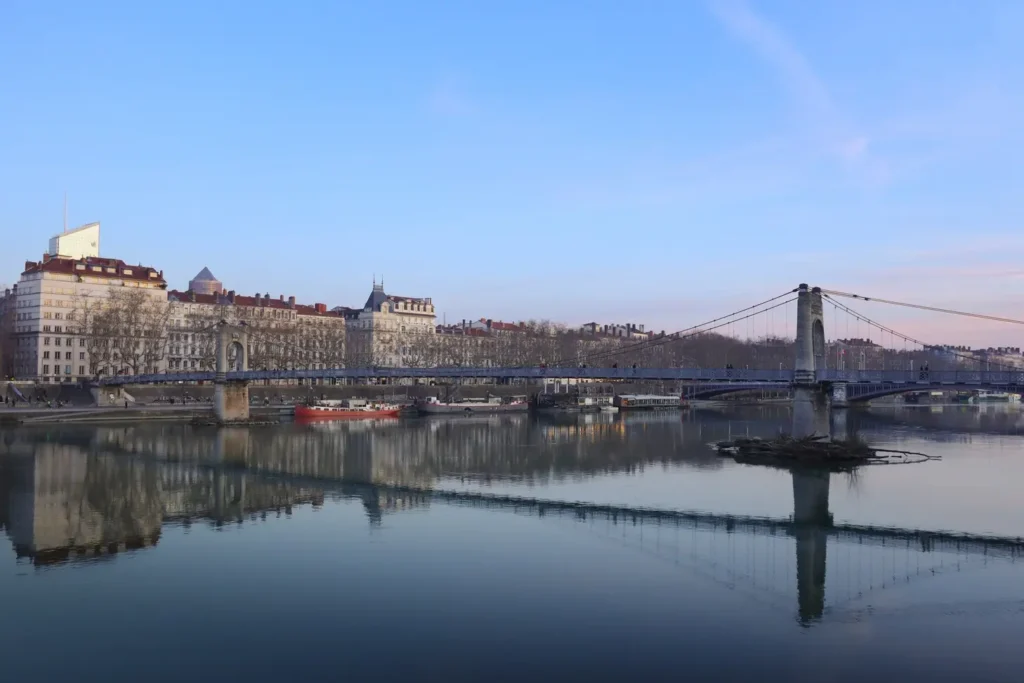
One of the best options is this 1-hour river cruise. It takes you through UNESCO-listed areas like Vieux Lyon, past Fourvière Hill and under Lyon’s beautiful 19th-century bridges. With a live guide providing insights into the city’s history and architecture, this tour is a relaxing yet informative way to explore Lyon.
Important note: During low season, the boat may only depart at 3 pm. If that’s the case during your visit and you’re following this itinerary, you’ll need to rearrange the itinerary’s order. For example, you can do the boat ride earlier in the afternoon and visit Lyon’s squares afterward.
If you want to turn your cruise into a gastronomic experience, consider this gourmet river cruise. This tour offers delicious snacks and a glass of wine onboard, featuring local Lyonnais cuisine while you glide past the city’s most scenic spots. It’s a fantastic way to combine sightseeing and dining.
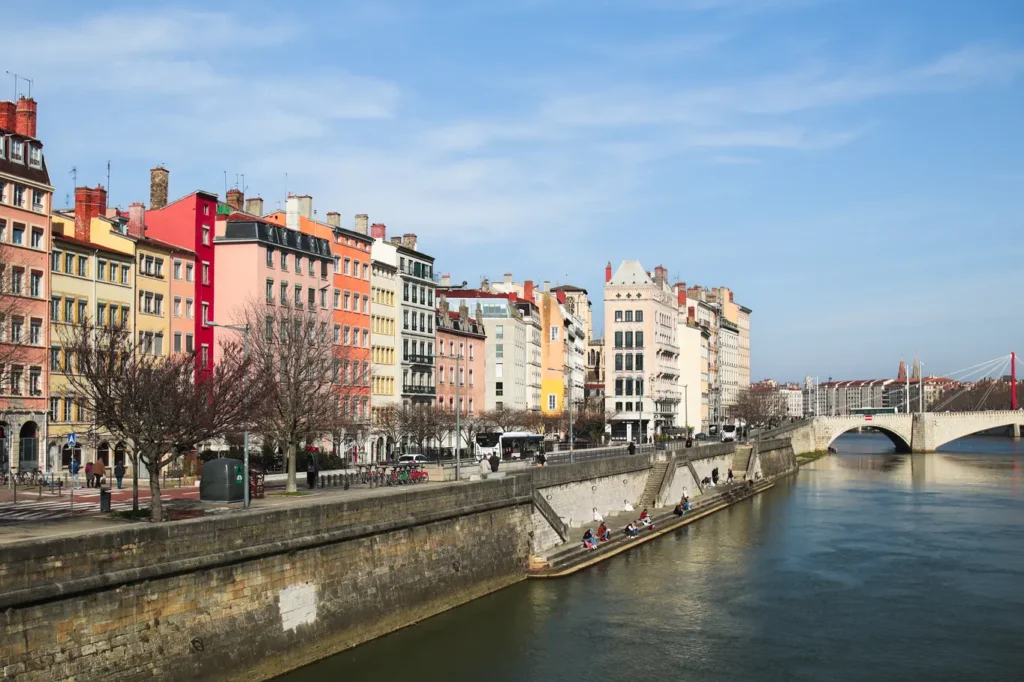
Whichever option you choose, a river cruise in Lyon is a fantastic addition to your itinerary. It’ll allow you to see the city from a whole new perspective!
Even if you decide not to take a boat tour, you can always walk along the riverside, which is a beautiful and peaceful way to end your first day in Lyon. The Saône River banks offer stunning views, making it the perfect spot for an evening stroll before heading to dinner.
Day 2 in Lyon: Lyon from Above & the Historic Old Town
Morning: Fourvière Hill & Roman History
» Fourvière Basilica – The Best View of Lyon
Start your day at Fourvière Basilica, one of the most iconic landmarks and a must-see in Lyon.
Sitting high above the city on Fourvière Hill, this stunning 19th-century basilica offers panoramic views over Lyon. Inside, you’ll find intricate mosaics, stained glass windows, and golden details. The Basilica was my favorite church in Lyon.
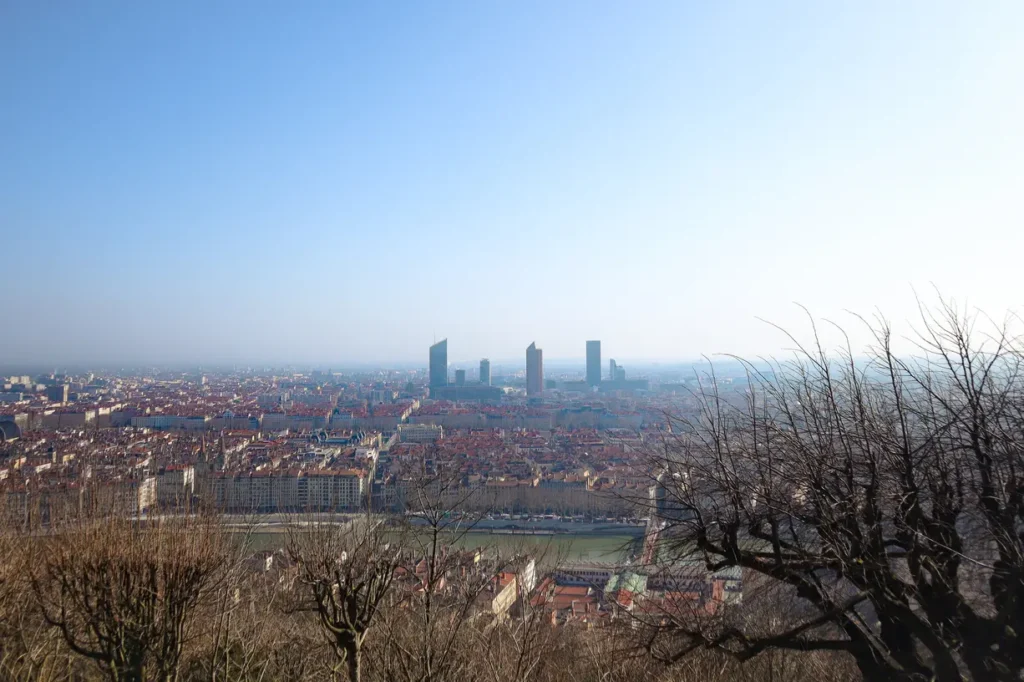
Plus, next to the basilica, you’ll find its terrace which is actually one of the best viewpoints in the city.
For an unforgettable experience, visit early in the morning. During sunrise, the soft light makes the view even more magical. If you can’t make it there at sunrise, don’t worry. I didn’t get to visit at sunrise and the view was still impressive!
How to get to Fourvière Basilica
To reach Fourvière Basilica, you have two options. You can hike up from Vieux Lyon or take the funicular from Saint-Jean station for a quicker and easier ascent.
Personally, I wouldn’t recommend hiking up—the steep incline makes it quite a workout, and even walking back down was tough on my knees!
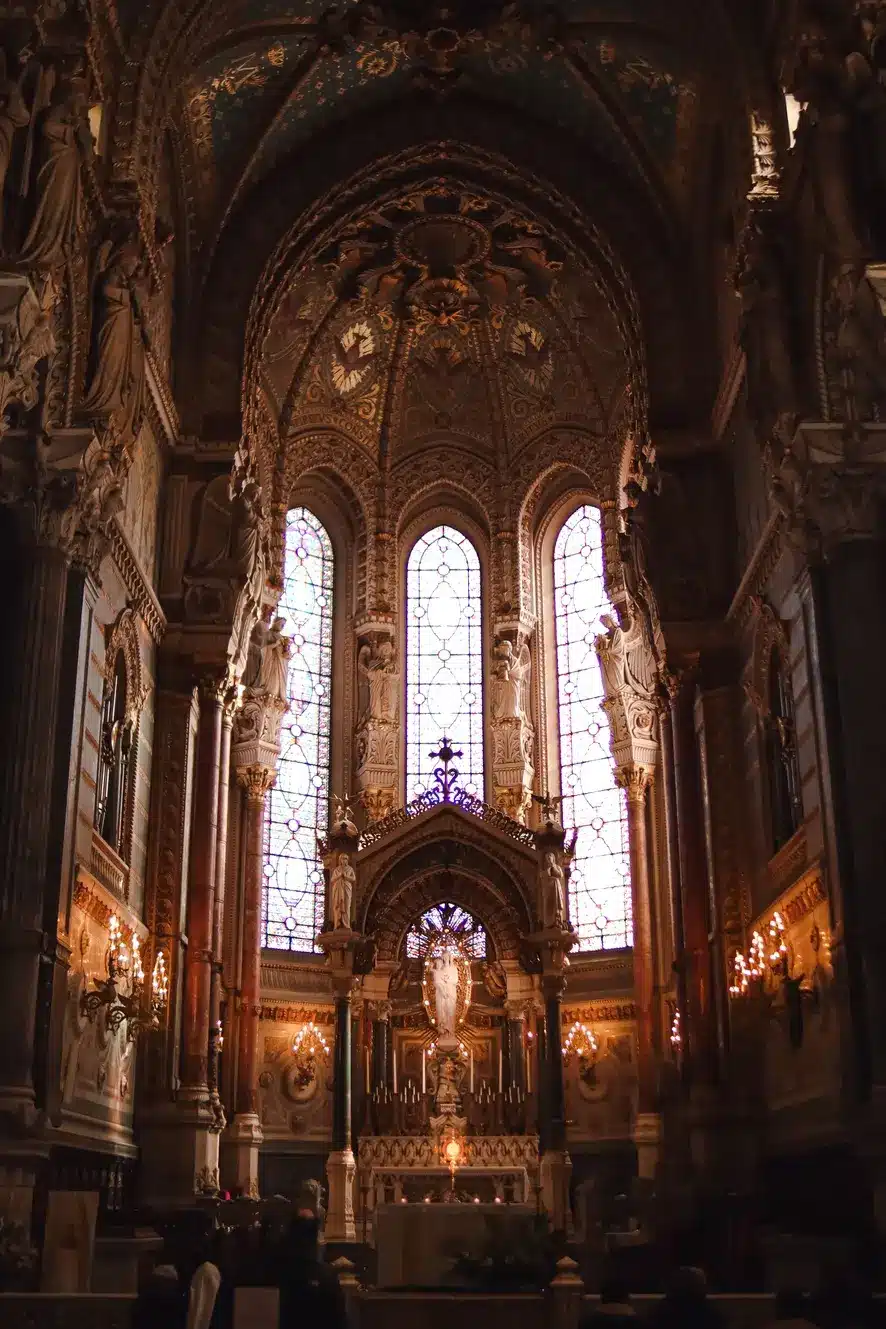
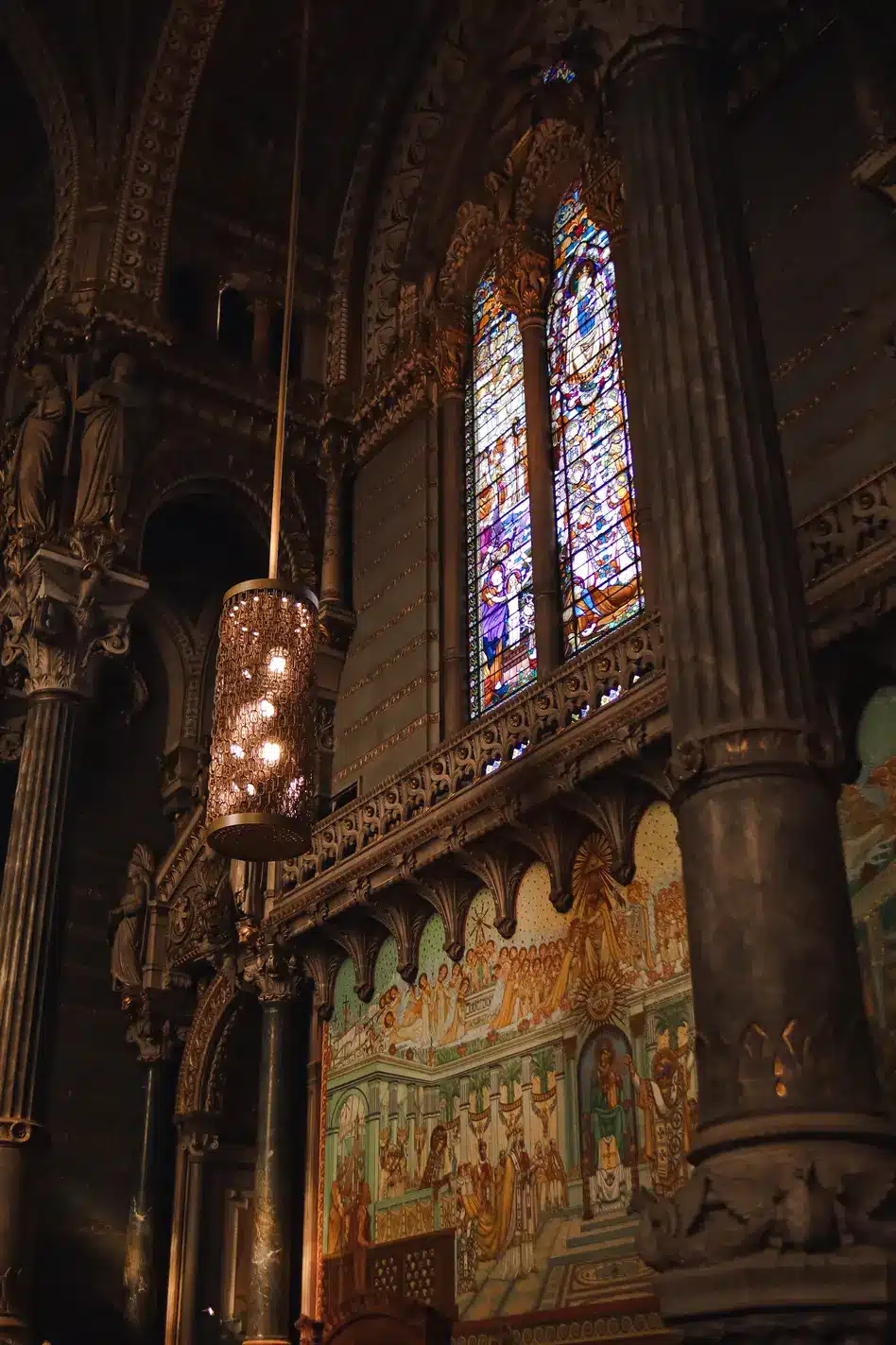
Instead, I took the funicular up (it stops in front of the basilica) and walked down, which was much more manageable.
Plus, the funicular ride is affordable and it’s included in the daily transport pass. This is rather a convenient choice if you plan to use public transport throughout the day.
📝 USEFUL INFORMATION: Fourvière Basilica is open daily from 7 am to 9 pm, and the best part? Entry is completely free.
» Gallo-Roman Amphitheater
Just a short walk from Fourvière Basilica, you’ll find the Gallo-Roman Amphitheater, a must-visit for history lovers.
Built in 15 BC, this amphitheater is one of the oldest Roman sites in France. Plus, it was once used for public performances, gladiator fights, and political speeches.
Today, the ruins still host cultural events, including the famous Nuits de Fourvière festival during the summer.
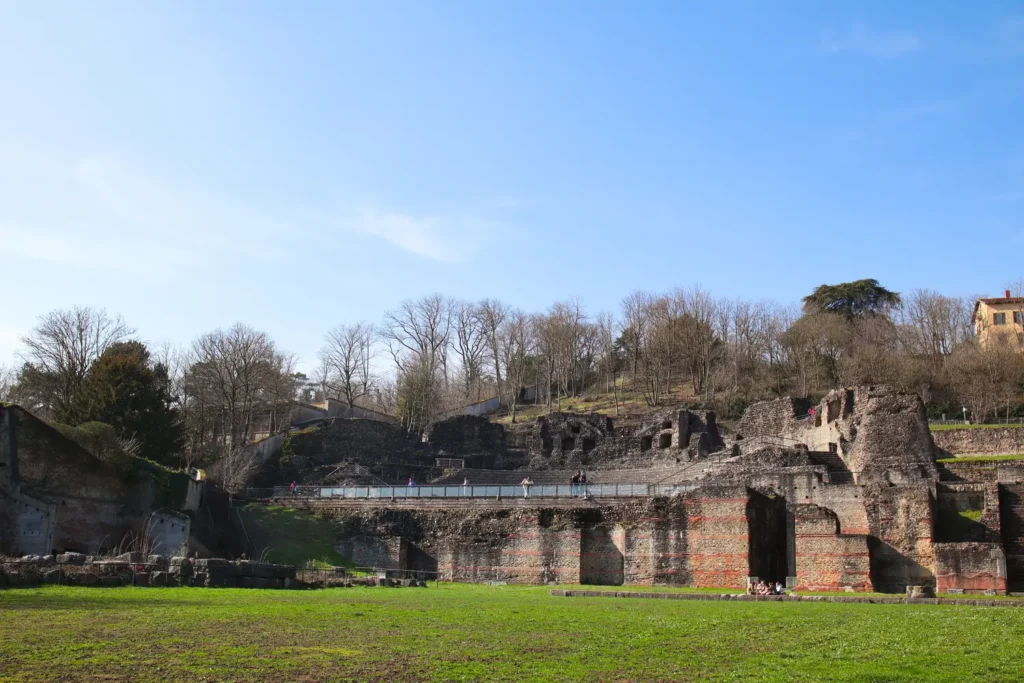
For an even deeper dive into Lyon’s Roman history, head to the Lugdunum Museum, located right next to the amphitheater.
This museum houses a vast collection of Roman artifacts, including mosaics, statues, and everyday objects from ancient Lugdunum. If you’re interested in history, this is one of the most fascinating places to visit in Lyon.
📝 USEFUL INFORMATION: The Roman Theaters are open May to September from 7 am to 9 pm and October to April from 7 am to 7 pm, with free entry. The Lugdunum Museum is open Tuesday to Friday from 11 am to 6 pm and Saturday & Sunday from 10 am to 6 pm, closed on Mondays. Tickets cost between 4€ to 7€ (depending on the exhibitions). It’s free to visit on the first Sunday of the month. Read more information about Lugdunum.
» Church of Saint-Just
If you’re looking for less touristy places to visit in Lyon, the Church of Saint-Just is a great stop.
One of the oldest churches in the city, it dates back to the 4th century, though it has been rebuilt several times over the centuries.
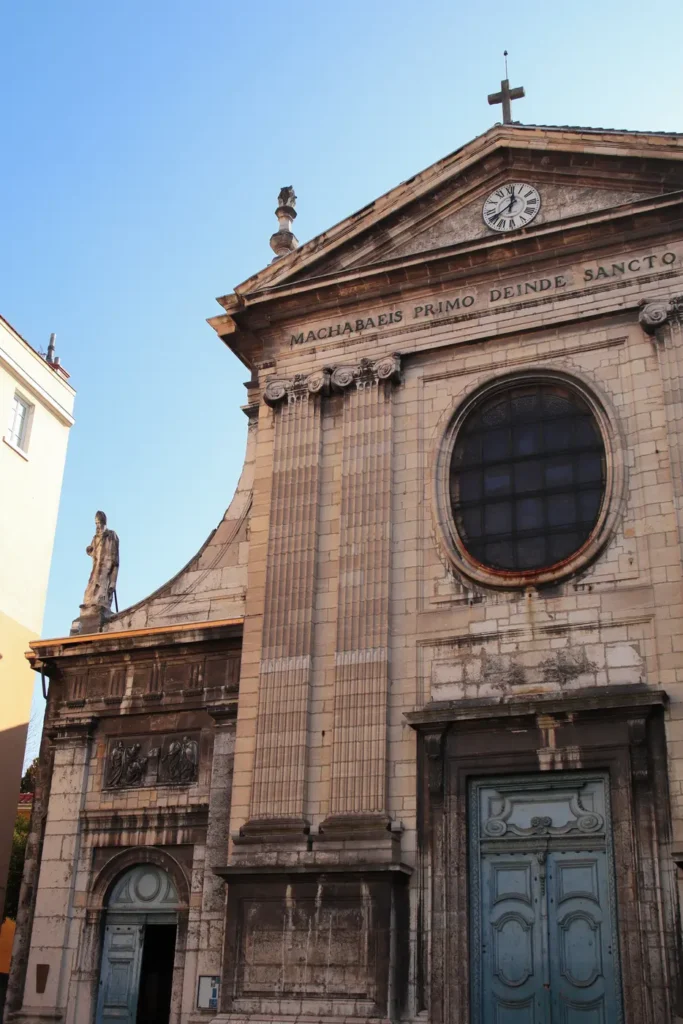
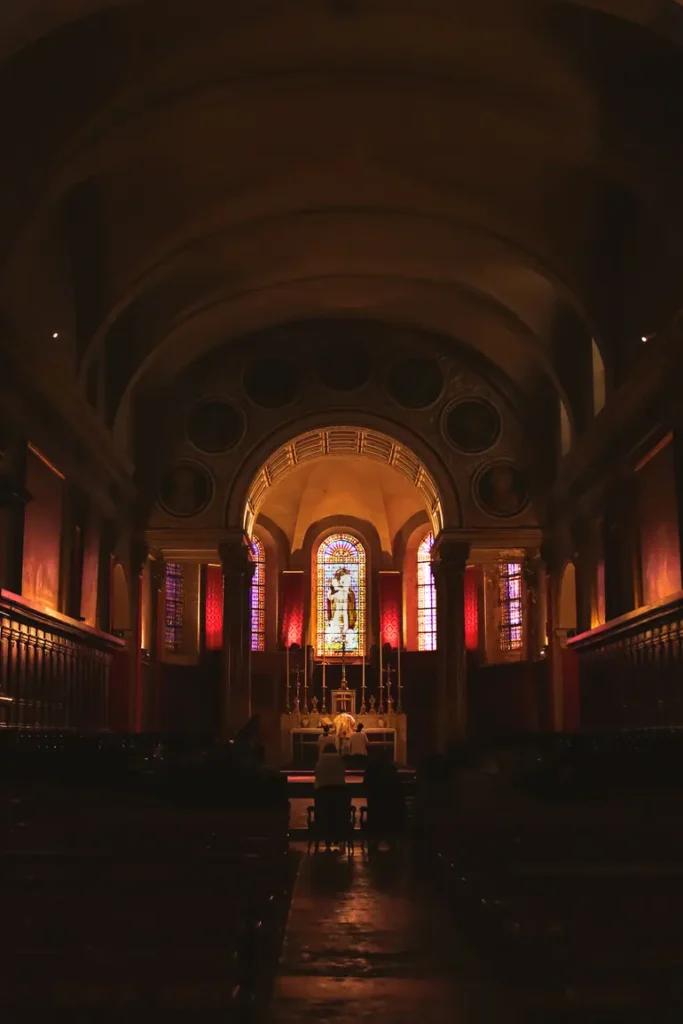
While it may not be as grand as Fourvière Basilica, it offers a peaceful atmosphere and a chance to step away from the crowds.
The church’s simple yet elegant Romanesque architecture reflects Lyon’s rich religious history, making it a perfect place for a short visit.
» Jardin des Curiosités
For one of the best hidden views in Lyon, head to Jardin des Curiosités. Unlike the busy terraces at Fourvière Basilica, this small, quiet park offers a panoramic view of Lyon in a peaceful setting.
It’s the perfect place to take a break and soak in the scenery. I don’t think there were any tourists when I visited!
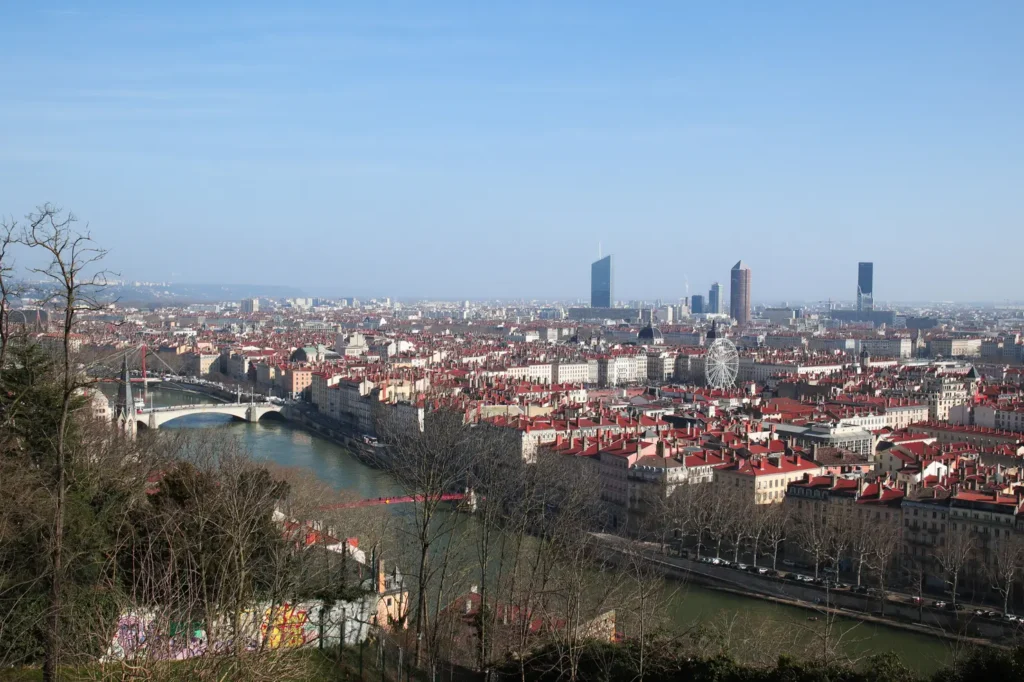
The garden was a gift from the city of Montreal to Lyon in 2001. And, while it’s small, its elevated position makes it one of the best places to visit in Lyon for those who love scenic viewpoints.
If you’re looking for a spot away from the crowds to enjoy a unique perspective of the city, this is it.
» St. George Church
Before heading into Vieux Lyon, make a stop at St. George Church, one of the city’s most charming riverside churches. While the church itself is often closed, you can admire its pointed bell tower from across the river.
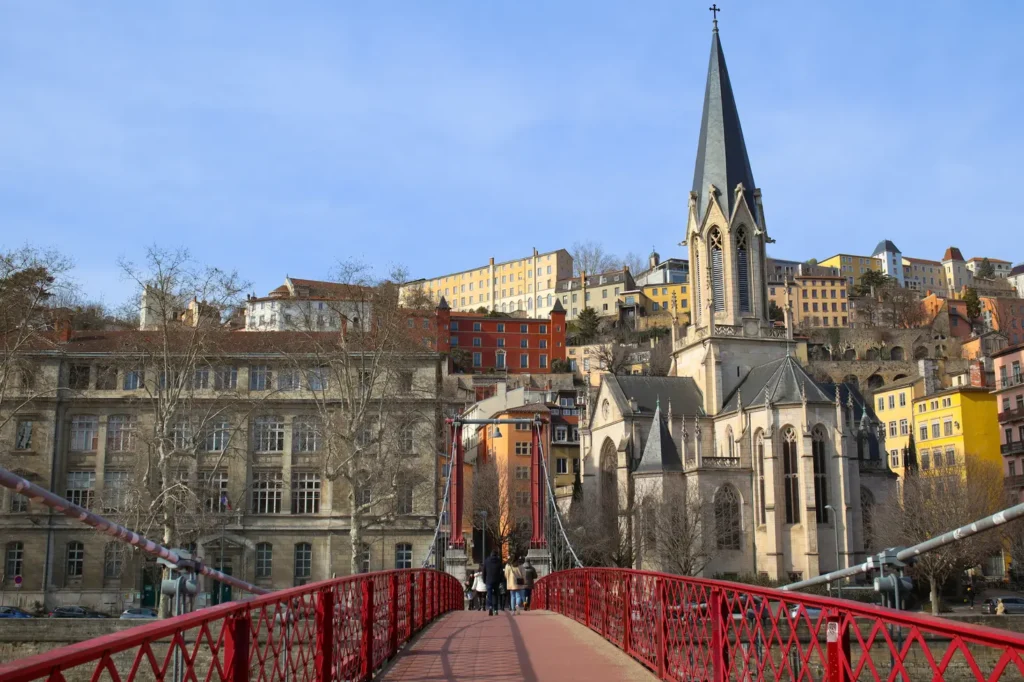
For the best view, head to the corner of Passerelle Saint-Georges and Quai Tilsitt. This is a great photo spot showcasing the church against the backdrop of Old Lyon.
Make sure not to miss this place because this is where you’ll get one of those postcard views of Lyon.
Afternoon: Exploring the Medieval Beauty of Vieux Lyon
» Vieux Lyon – The Most Charming District in the City
A visit to Lyon wouldn’t be complete without wandering through Vieux Lyon, the city’s oldest and most atmospheric district.
This UNESCO-listed neighborhood is one of the largest Renaissance quarters in Europe. It’s filled with colorful facades, hidden passageways, and historic landmarks.
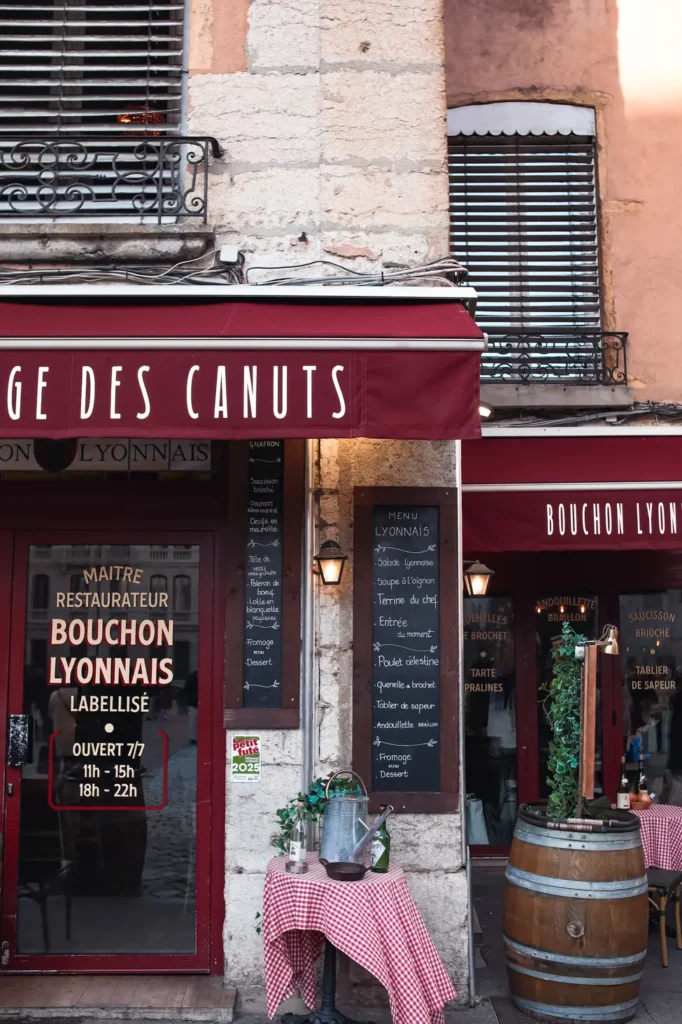
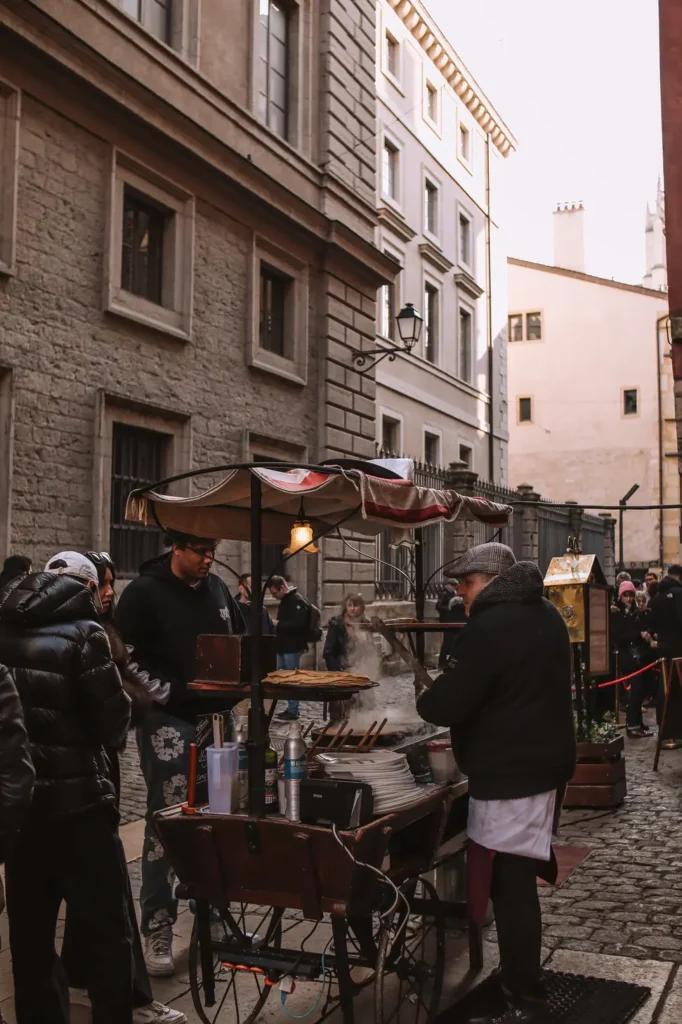
Here’s what to see in Lyon in 2 days while in Vieux Lyon:
- Rue de la Loge, Rue Saint-Jean & Rue du Bœuf – The best streets for strolling, packed with bouchons (traditional restaurants), boutique shops, and medieval architecture.
- Traboules of Vieux Lyon – Hidden passageways originally used by merchants and silk workers.
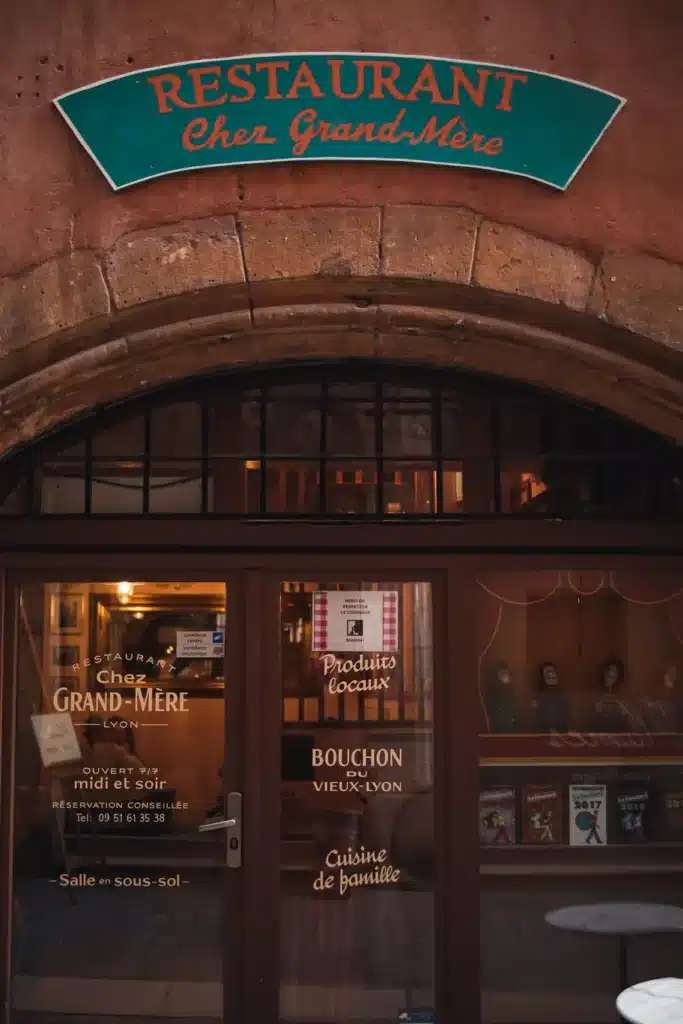
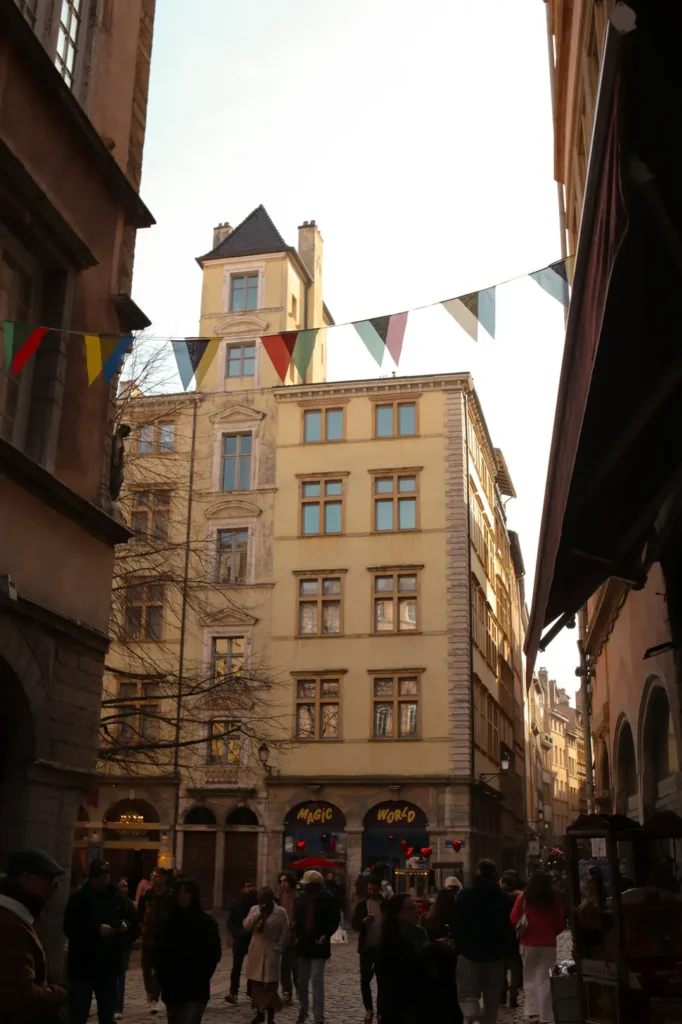
And if that wasn’t enough to make you fall in love with it, the constant smell of fresh crêpes wafting through the air definitely will. Seriously, it’s impossible to walk through these streets without suddenly craving one. Consider yourself warned.
🎫 One of the best ways to truly experience Lyon is by joining a guided walking tour. With a local expert leading the way, you’ll uncover the city’s rich history, hidden traboules, and must-see landmarks, all while learning fascinating stories about its past. This Lyon city highlights walking tour takes you through Vieux Lyon, Presqu’île, and the city’s famous murals, offering insights you might miss on your own.
» La Longue Traboule
While exploring Lyon Old Town, make sure not to miss La Longue Traboule, one of the city’s longest and most fascinating hidden passageways.
Stretching from 54 Rue Saint-Jean to 27 Rue du Bœuf, this traboule offers a unique glimpse into Lyon’s past.
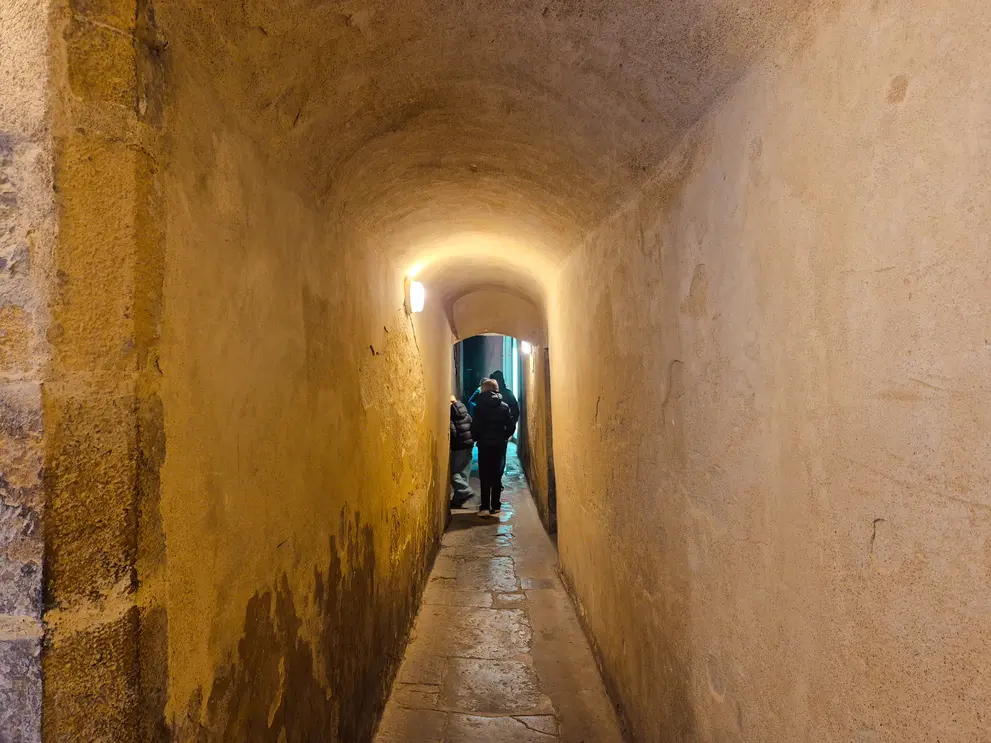
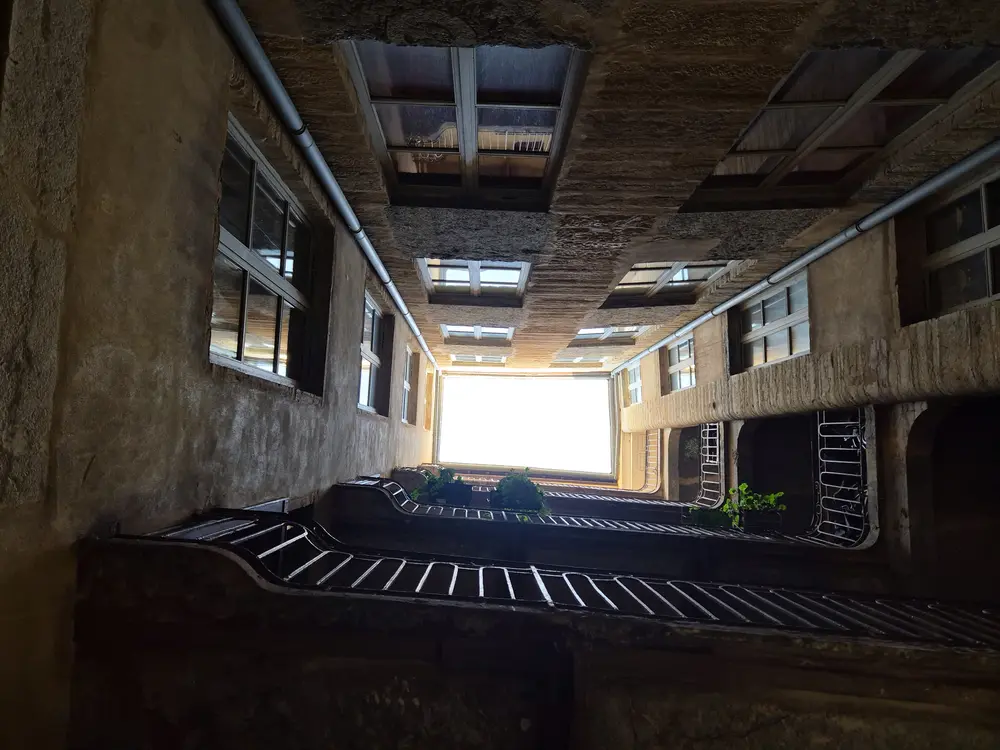
Originally built for silk workers to transport fabric, these secret corridors later became crucial escape routes for resistance fighters during World War II. They’re an important part of the city’s history.
Keep an eye out for the discreet entrances. They blend so well into the surrounding buildings that you might walk past them without even realizing it!
» Saint-Jean-Baptiste Cathedral
Next, head to Cathédrale Saint-Jean-Baptiste. This is one of the most impressive religious landmarks in Lyon and the heart of Vieux Lyon.
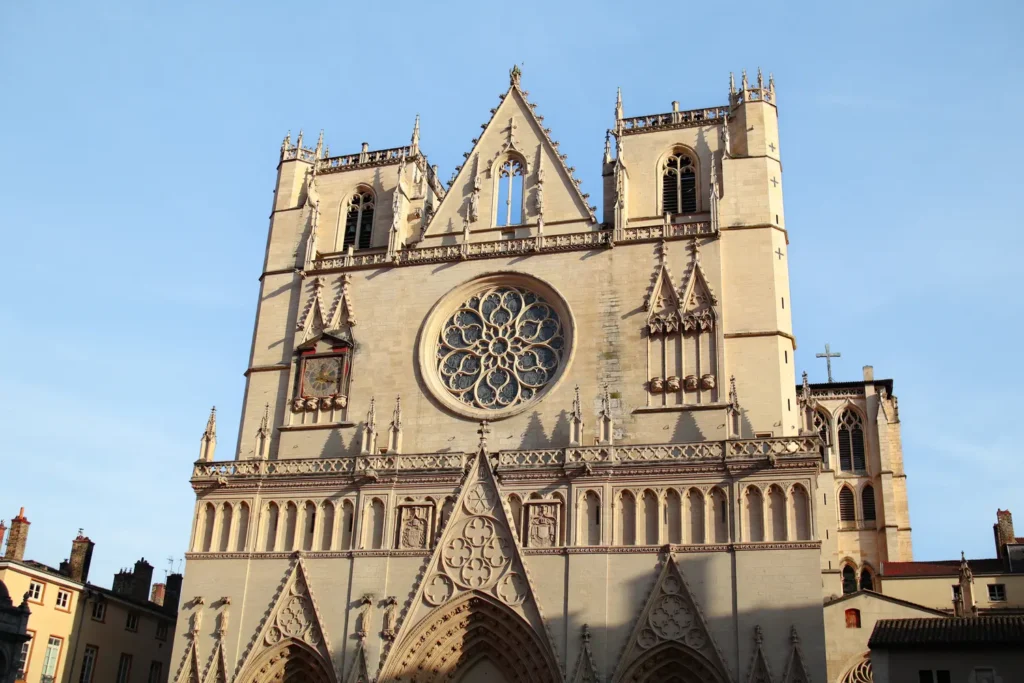
Built between the 12th and 15th centuries, the cathedral is a stunning blend of Romanesque and Gothic architecture, with towering stained glass windows that flood the interior with colorful light.
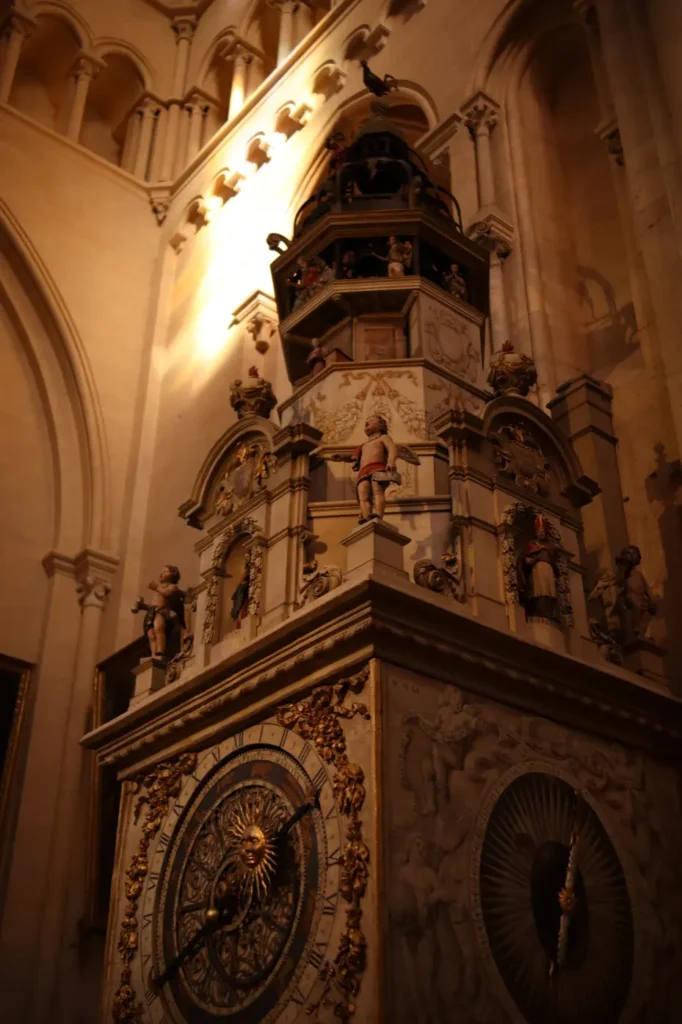
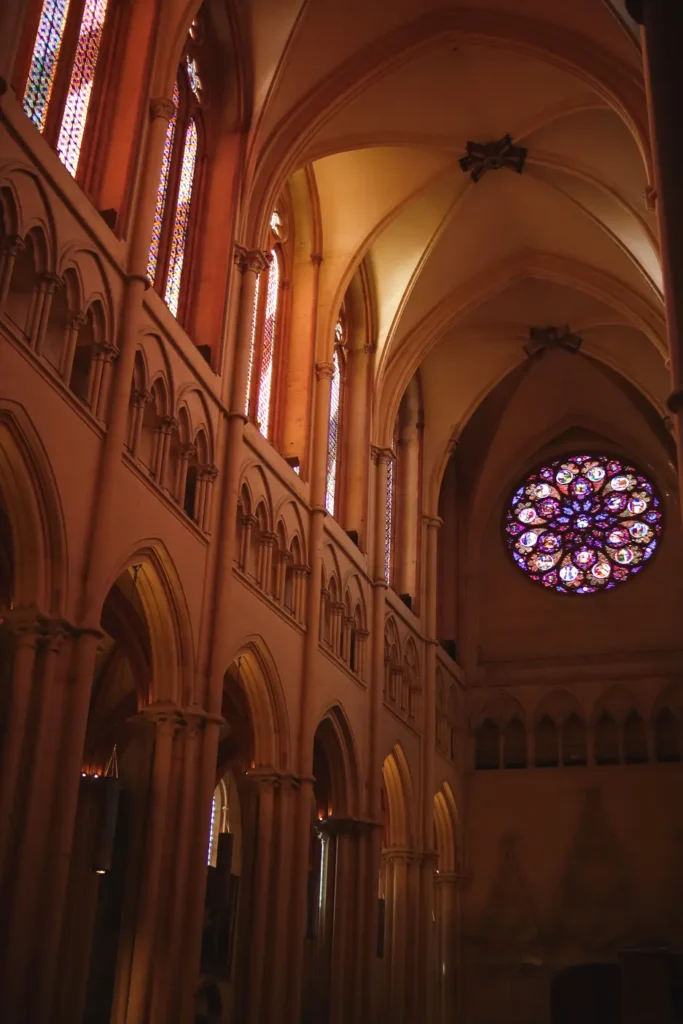
Its most famous feature is the 14th-century astronomical clock. It has an intricate mechanism that still functions today, tracking solar, lunar, and religious cycles.
In my opinion, it is not as beautiful as the Fouvière Basilica, but still worth a visit.
📝 USEFUL INFORMATION: The cathedral is free to enter.
» Mural ‘La Bibliothèque de la Cité’ & Fresque des Lyonnais
End your day by admiring two of the most impressive murals in Lyon. Both offer a unique glimpse into the city’s literary and historical legacy.
The first stop is La Bibliothèque de la Cité, located at 6 Rue de la Platière. This massive trompe-l’œil mural is designed to resemble a gigantic bookshelf, filled with books by famous Lyonnais authors.
It’s a tribute to the city’s rich literary heritage, featuring works by writers like Antoine de Saint-Exupéry (author of The Little Prince) and Frédéric Dard.
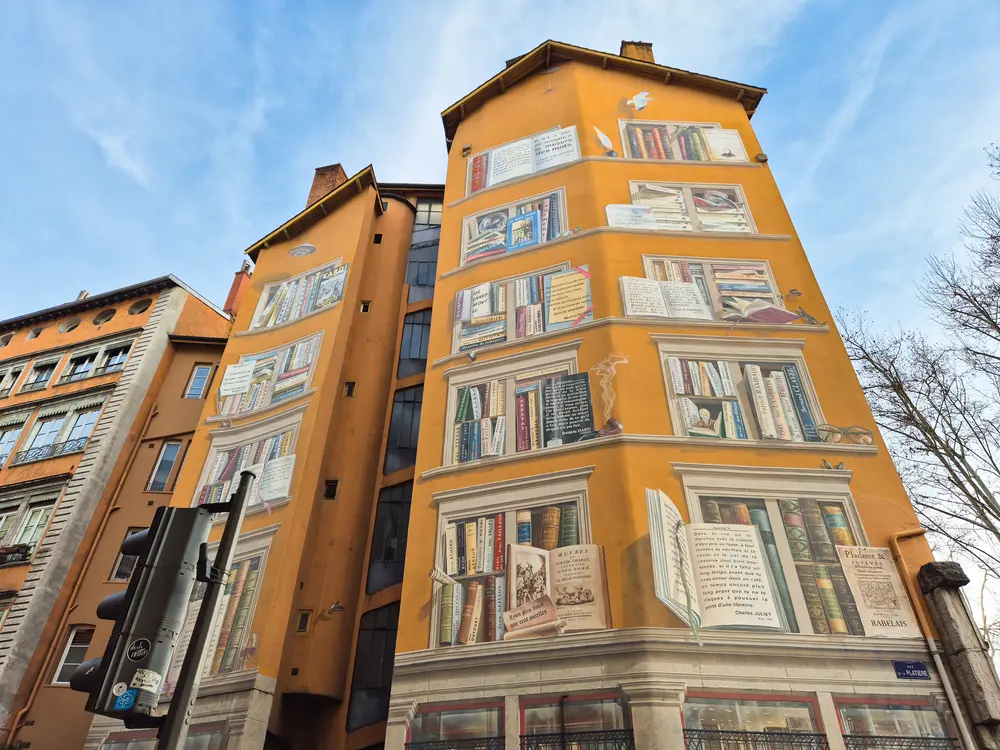
Just a short walk away, at 49 Quai Saint-Vincent, you’ll find the Fresque des Lyonnais, another famous mural in Lyon. Covering the entire facade of a building, this beautifully detailed artwork features over 30 historical figures from Lyon’s past. This includes Roman Emperor Claudius, silk weaver Jacquard, and the legendary chef Paul Bocuse.
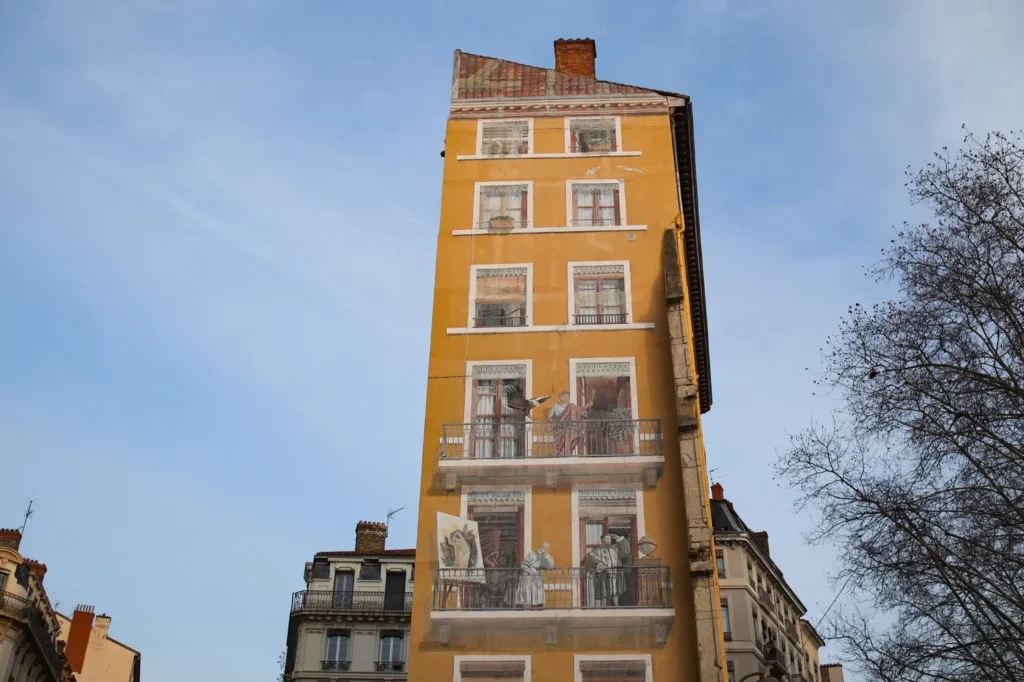
These murals are truly some of the most impressive I’ve come across in my travels. The level of detail is incredible, and the realistic trompe-l’œil effect makes them feel almost alive. Since they’re free to visit and always open, they’re an easy and worthwhile stop that adds a unique artistic touch to any Lyon itinerary.
Other things to do in Lyon if you have more time
If you have extra time during your trip to Lyon or want to swap out certain activities, here are some additional things to visit in Lyon:
Parks & Scenic Walks
- Confluence District & Musée des Confluences – A modern and futuristic part of Lyon where the Rhône and Saône Rivers meet. The Musée des Confluences is an impressive science and anthropology museum with unique exhibitions.
- Berges du Rhône – A beautiful riverside promenade along the Rhône, perfect for biking, walking, or stopping at one of the floating bars.
- Île Barbe – A small, charming island on the Saône River with medieval ruins and a peaceful atmosphere.
Museums & Cultural Spots
- Musée des Confluences – One of Lyon’s most futuristic museums, exploring science, anthropology, and natural history.
- Musée de l’Illusion – A fun and interactive museum filled with mind-bending optical illusions, holograms, and perspective tricks. Perfect for families or anyone looking for a unique experience.
- Musée des Beaux-Arts de Lyon – One of France’s most important fine arts museums. It features works from Monet, Rembrandt, and Rodin.
- Musée Lumière – A must-visit for cinema lovers. It showcases the history of film in the birthplace of the Lumière brothers, who invented cinematography.
- Museum of Cinema & Miniatures – A fascinating museum showcasing props, costumes, and special effects from famous films, alongside an incredible collection of intricately detailed miniature scenes.
- Gadagne Museums (Musée d’Histoire de Lyon & Puppetry Museum) – A fascinating museum covering Lyon’s history, plus an exhibition dedicated to Guignol.
- Maison des Canuts – this museum showcases Lyon’s silk-weaving history with live demonstrations on 19th-century looms.
Where to eat in Lyon
Lyon is known as the gastronomic capital of France, and no trip here is complete without indulging in its famous food scene.
Whether you’re looking to try traditional Lyonnais cuisine at a bouchon, explore the city’s culinary secrets on a food tour, or simply find a great spot for dinner, here’s what you need to know.
Best Bouchons in Lyon (Traditional Restaurants)
One of the best ways to experience Lyon’s rich culinary heritage is by dining at a bouchon. Bouchons are traditional restaurants that serve hearty, rustic dishes unique to the city.
Some of the most famous bouchons in Lyon include:
- Daniel & Denise – serves high-quality traditional Lyonnais cuisine with a refined touch.
- Bouchon des Cordeliers – A popular spot offering generous portions of classic dishes in a cozy, lively setting.
- Bouchon Les Lyonnais – One of the most authentic bouchons in the city, known for its rustic decor and hearty traditional meals.
💡 EXTRA TIP: If you’re visiting Lyon for just a few days, make sure to reserve a table in advance (many can be booked through the official website). Bouchons fill up fast, especially on weekends! For example, I didn’t book and had trouble finding a table when I was there (and I visited during low season).
Must-Try Dishes in Lyon
Lyonnais cuisine is rich, meaty, and full of bold flavors, with many dishes rooted in the city’s working-class history. Some of the must-try dishes include:
- Quenelle – A soft dumpling made with fish or meat, often served in a creamy sauce.
- Andouillette – A traditional sausage made with tripe, known for its strong flavor.
- Salade Lyonnaise – A fresh salad with frisée lettuce, crispy lardons, croutons, and a poached egg.
- Cervelle de Canut – A creamy cheese spread made with fresh herbs, garlic, and shallots, typically eaten with bread.
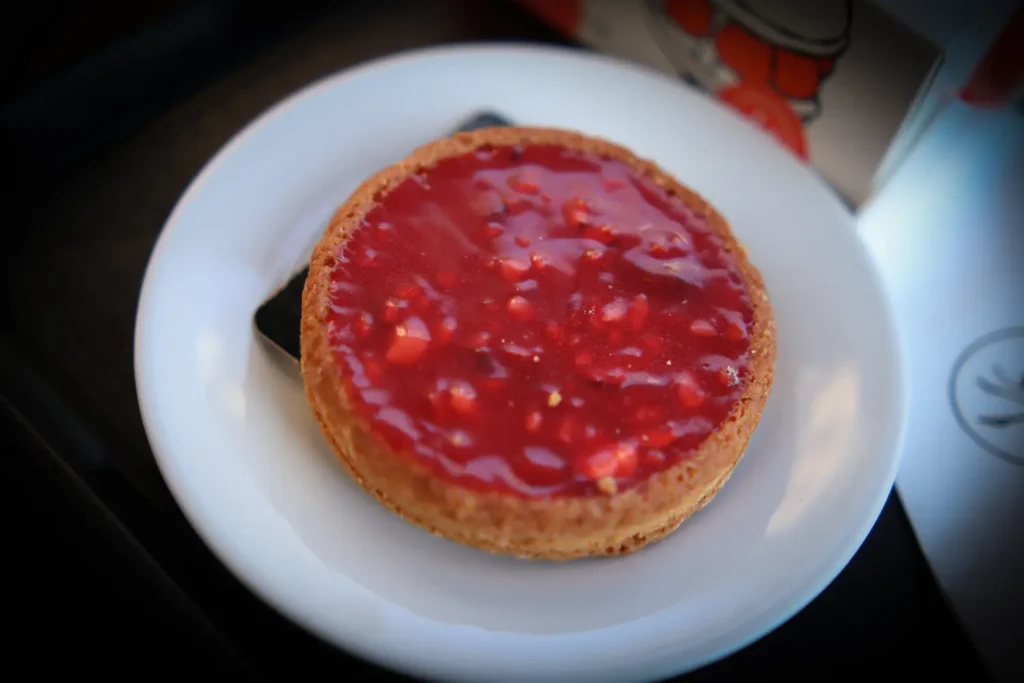
Personally, I ordered quenelle and andouillette during my visit, but I have to be honest—I wasn’t the biggest fan. The textures and flavors are definitely an acquired taste!
However, Lyon’s desserts are another story. I loved tarte praline, a bright pink tart made with caramelized almonds and praline. It’s sweet, crunchy, and completely addictive. If you have a sweet tooth, don’t leave Lyon without trying it!
Food Tours in Lyon – Are They Worth It?
If you’re a foodie looking for a deeper dive into Lyon’s culinary scene, joining a food tour is a great way to experience local flavors, hidden spots, and expert recommendations.
Here are a few options to consider:
- Beaujolais Wine Tasting Day Tour – Perfect for wine lovers. This tour takes you to the famous Beaujolais region, where you’ll visit vineyards and enjoy tastings of some of the best wines near Lyon.
- Lyon Old Town Food Tour – A guided walking tour through Vieux Lyon, stopping at bouchons, bakeries, and cheese shops to sample local delicacies.
- Secret Food Tours Lyon – A curated tour that introduces you to hidden culinary gems, with stops for charcuterie, wine, and local pastries.
- Lyon Evening Food Tour – A great option for those who want to explore Lyon’s food scene at night, with tastings of traditional dishes, wine, and desserts.
If you’re short on time but want to discover the best food Lyon has to offer, a guided food tour can be a great way to try multiple dishes in one experience while learning about the city’s culinary traditions.
Restaurants I Tried in Lyon
Beyond traditional bouchons, Lyon has a diverse food scene with plenty of great restaurants to choose from.
Here are some of the places I tried during my trip:
- Gomex Cantina ($)– A great spot for Mexican food in Lyon, with tasty tacos, burritos, and margaritas.
- La Trattoria de Saint-Jean ($$) – If you’re craving Italian food, this cozy restaurant in Vieux Lyon serves up delicious pizzas and other Italian dishes.
- Notre Maison ($$) – A traditional bouchon where I had the chance to try classic Lyonnais dishes. Even though I didn’t enjoy the main courses that much, the tarte praline for dessert was great.

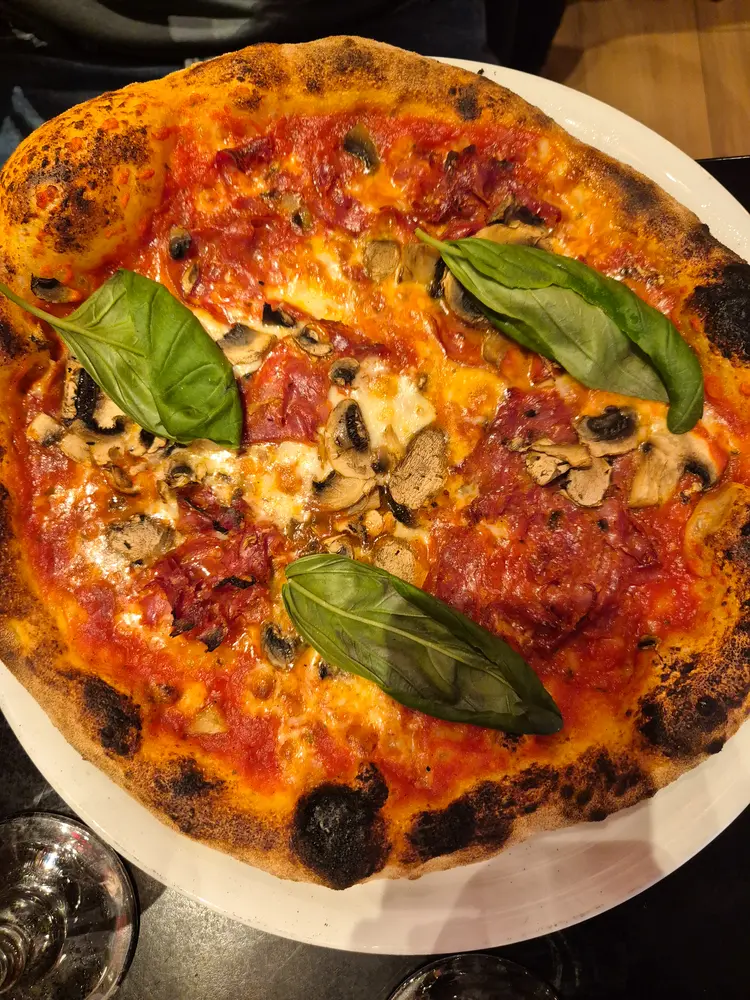
How many days in Lyon
2 days in Lyon is enough to see the city’s main highlights.
With a well-planned Lyon itinerary, you can explore Vieux Lyon, Fourvière Basilica, the traboules, the city’s famous murals, and even enjoy a river cruise or a traditional bouchon meal—all without feeling too rushed.
That said, if you’re someone who loves visiting museums, you might want to add an extra day to your trip. Lyon is home to some incredible museums, like the Musée des Confluences and the Museum of Cinema & Miniature, a paradise for movie lovers.
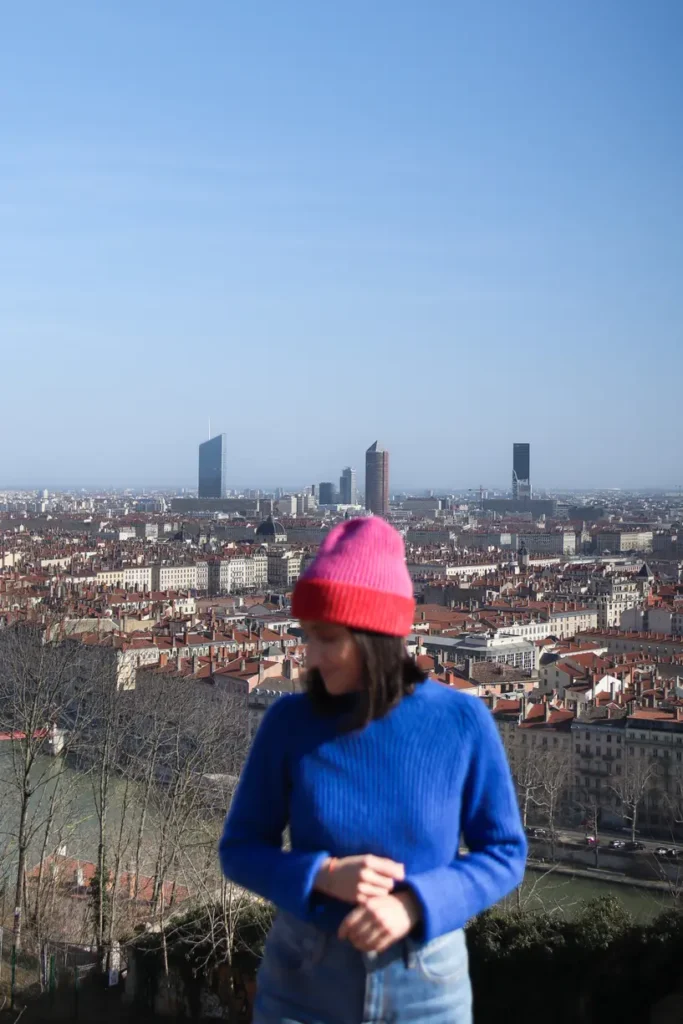
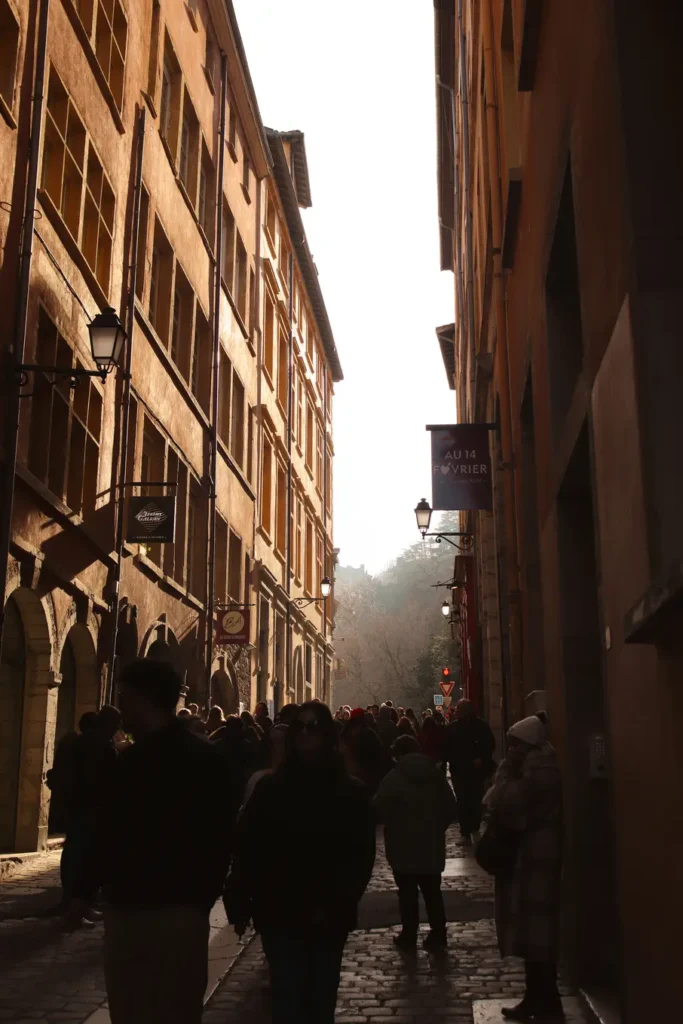
While I personally didn’t stay longer because I’m not a huge fan of cinema or museums, if those interest you, an extra day would allow for a more in-depth experience.
Ultimately, if you’re focused on seeing Lyon’s main attractions, two days will do the trick. But if you want to slow down, explore museums, or even take a day trip, three days would be ideal!
Best time to visit Lyon
Wondering when to plan your trip to Lyon? It depends on what you’re looking for!
I visited Lyon in February, and while it was cold, I was pleasantly surprised by how sunny and comfortable it was for walking around—as long as I was dressed properly.
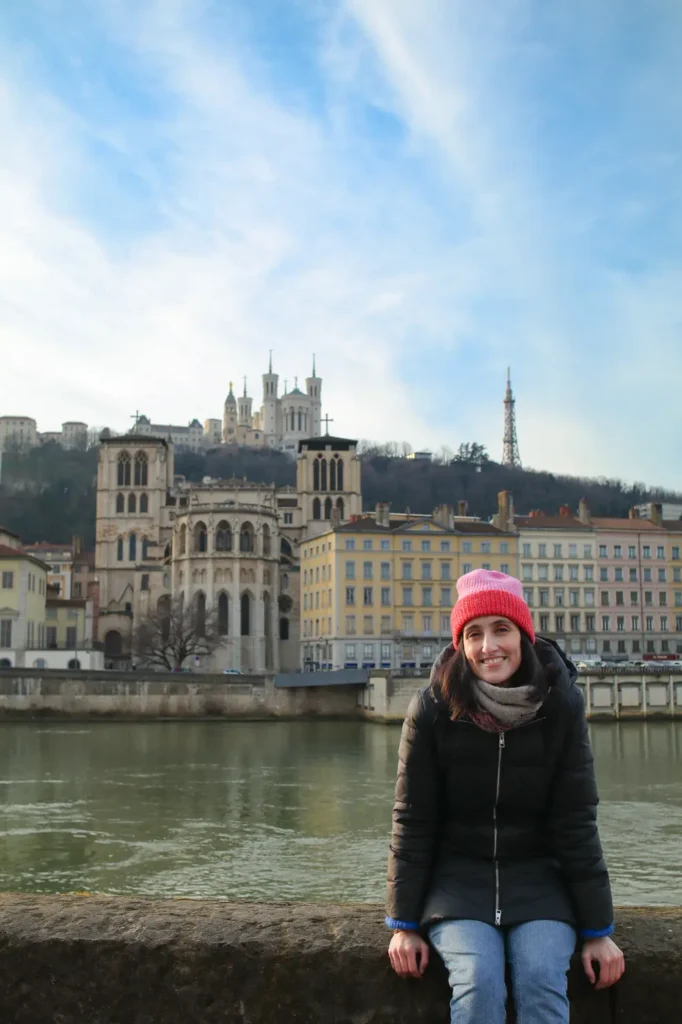
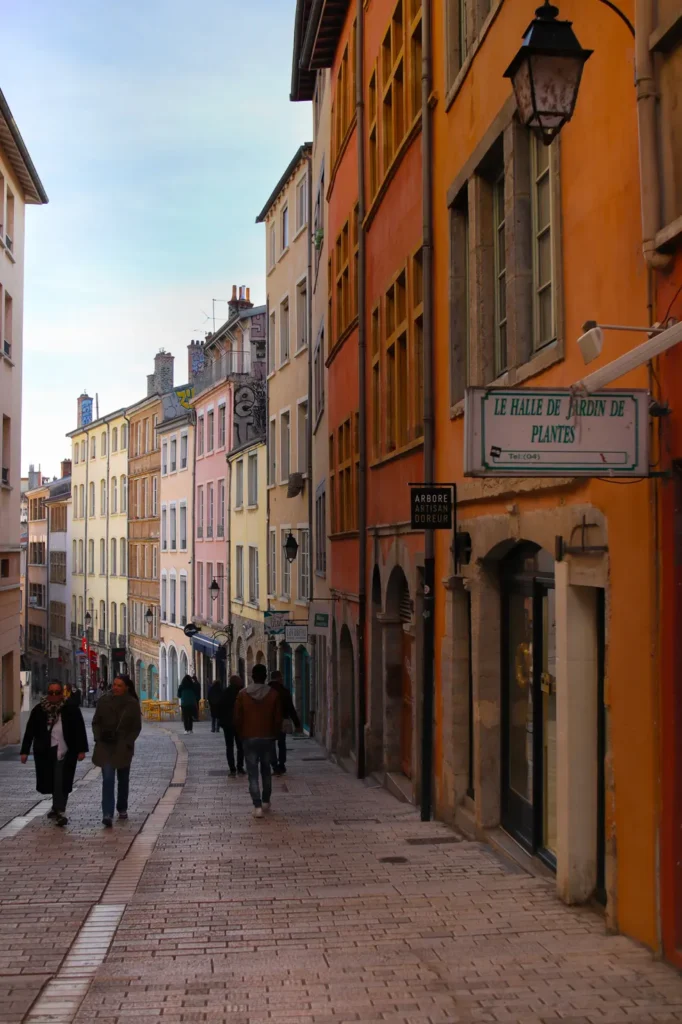
The winter months (December to February) are great if you want to experience fewer crowds, lower hotel prices, and cozy up in a traditional bouchon after a day of exploring.
For the best weather, spring (April–June) and autumn (September–October) are ideal. These seasons offer mild temperatures, fewer tourists than summer, and vibrant colors in Lyon’s parks and along the riverbanks.
Summer (July–August) can be hot, and many locals leave for holidays, so while the city feels quieter, some restaurants and shops might be closed.
If you’re visiting in December, don’t miss Lyon’s Festival of Lights (Fête des Lumières), one of the most magical events in the city, where buildings and landmarks are illuminated with artistic light displays.
Frequently Asked Questions about Lyon
» What is Lyon famous for?
Lyon is famous for being the gastronomic capital of France, home to traditional bouchons and world-renowned chefs like Paul Bocuse.
The city is also known for its UNESCO-listed Old Town (Vieux Lyon), traboules (hidden passageways), and its past role in the silk trade.
Visitors love Lyon for its Fourvière Basilica, Roman amphitheaters, and the Festival of Lights (Fête des Lumières), an annual event that transforms the city into a dazzling light show.
» Is Lyon a walkable city?
Yes, Lyon is an extremely walkable city, especially in areas like Vieux Lyon, Presqu’île, and Croix-Rousse, where you’ll find most of the city’s top attractions.
However, some areas, like Fourvière Hill, have steep inclines, so taking the funicular may be a better option. The city also has beautiful riverside promenades, making it perfect for exploring on foot.
» What is the best way of getting around Lyon?
The best way to get around Lyon is by walking and using public transport. The city has an efficient metro, tram, and bus system.
Lyon City Card includes unlimited transport. Even if decide not to purchase a Lyon City Card, you can buy a daily public transport pass for 6.9€. Check out the most updated transport fares in Lyon.
The Vélo’v bike-sharing system is another great option, especially for exploring along the Rhône River.
If you’re heading up to Fourvière Basilica, the funicular is the easiest way to get there.
» How to get from Lyon airport to city center?
The fastest way is the Rhônexpress tram, which takes 30 minutes to Lyon Part-Dieu station. Tickets cost 16€ one-way (28€ round-trip) when booked online.
For a cheaper option, you can take the TCL public bus and metro, which takes about 1 hour but costs significantly less.
On the other hand, if you want a hassle-free experience, especially if you’re arriving late in the day, book an airport transfer with Welcome Pickups.
» Is Lyon City Pass worth it?
The Lyon City Pass is worth it if you plan to visit multiple attractions and use public transport.
It includes unlimited metro, tram, bus, and funicular rides, free entry to museums, a guided tour, and a river cruise.
If you want to explore Lyon’s main attractions, the pass can save you money. I didn’t purchase one because I didn’t visit any museums, but it might be worth it depending on what you’re visiting. Get your Lyon City Pass.
» What are some of the best day trips from Lyon?
Some of the best day trips from Lyon include Annecy, known as the Venice of the Alps, and Beaujolais, a top destination for wine lovers. Pérouges, a medieval village, is perfect for history buffs, while Burgundy is great for wine tasting.
Other options include Cluny Abbey, Chambéry, and the Grottes de Cerdon for a unique cave experience. Find out more about the best day trips from Lyon.
Final thoughts on Lyon
So, is Lyon worth visiting? Absolutely!
With its rich history, incredible food scene, and stunning architecture, Lyon is one of the most exciting cities to explore in France.
Whether you’re wandering through Vieux Lyon’s medieval streets, indulging in local specialties at a bouchon, or taking in the panoramic views from Fourvière Basilica, there’s something special at every turn.
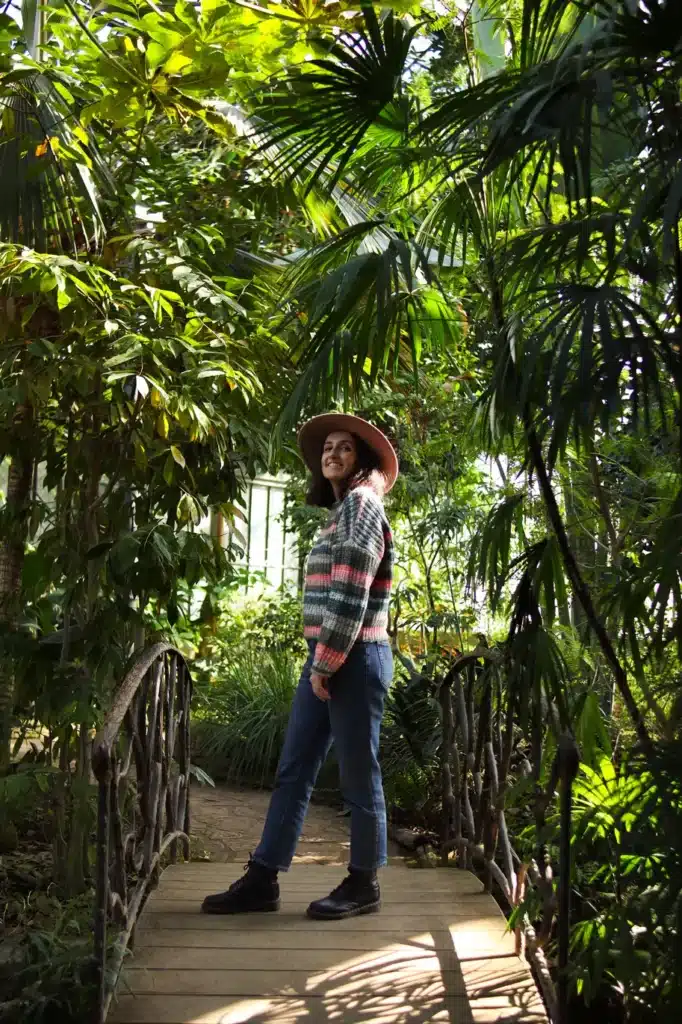
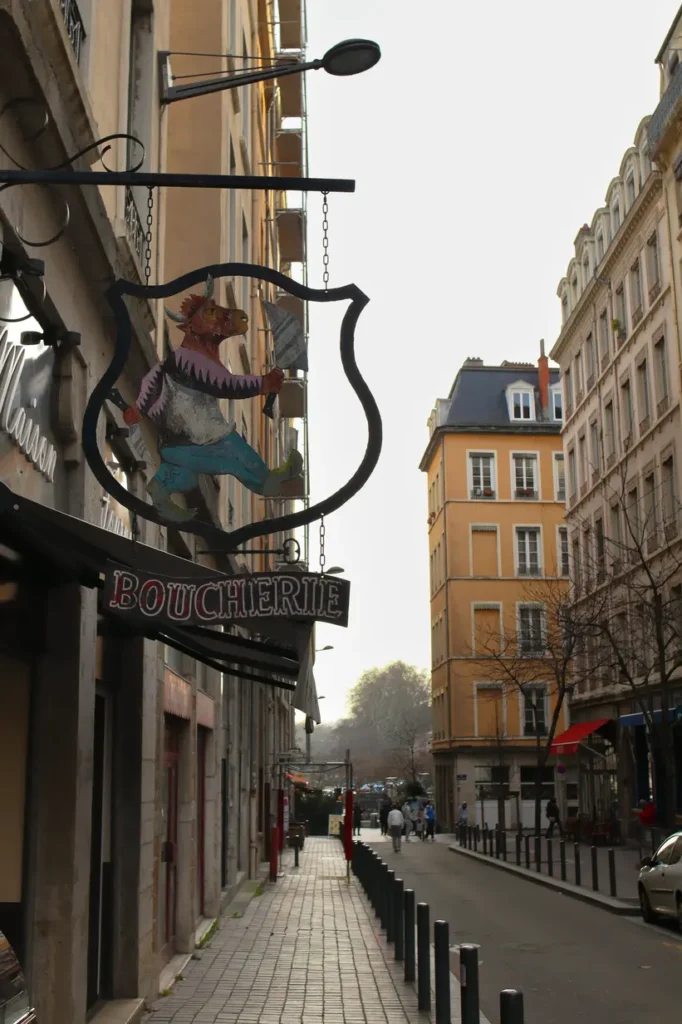
This Lyon itinerary proves that you can experience the city’s best highlights in just 2 days in Lyon—without feeling rushed.
From exploring its hidden traboules to enjoying a scenic river cruise, Lyon offers a perfect blend of culture, history, and mouthwatering cuisine.
What are you most excited to see in Lyon? Have any questions about your itinerary? Drop a comment below!
Disclaimer: this post may contain some affiliate links, which means I get a small commission if you buy something through my links. This doesn’t represent any additional cost to you and you’ll be supporting my work here on the blog😊

